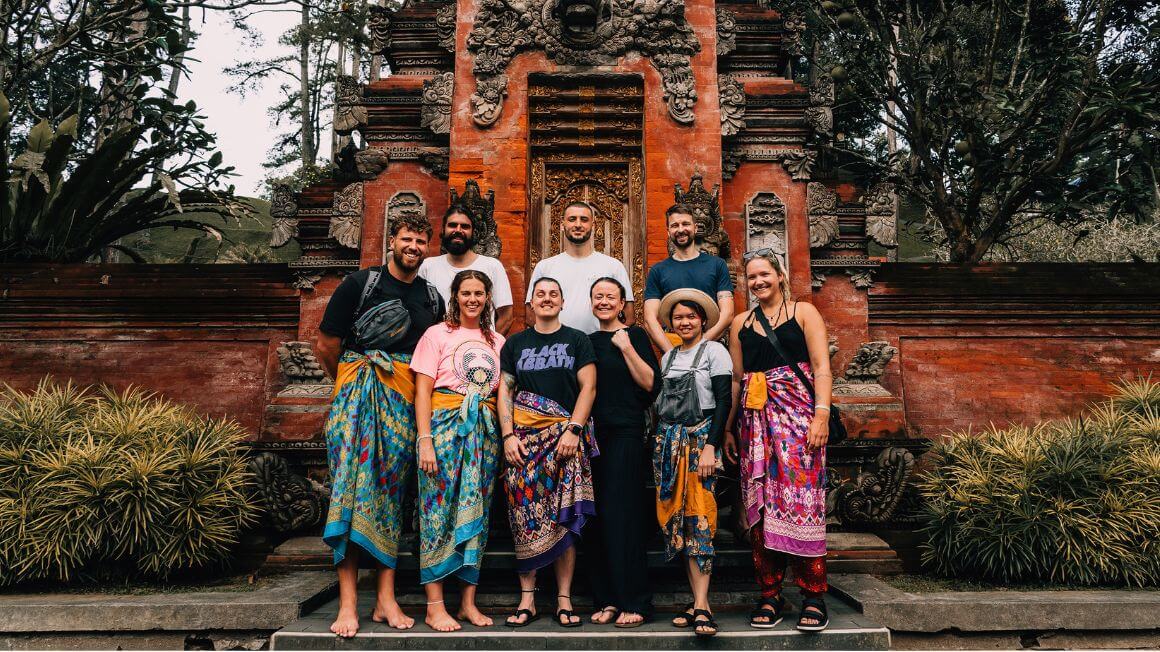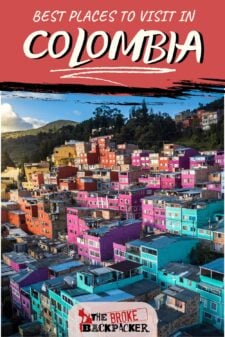Forget everything you thought you knew about Colombia because this country is about to flip your travel bucket list on its head. Once an under-the-radar country with a slightly dicey rep, Colombia is quickly becoming one of the region’s go-to destinations.
One glimpse of the cloud-draped mountains, Caribbean coastline, and charming cities, and you’ll have a better idea why.
Even as tourism evolves in the country, some things just never change. There might be new street art popping up, but the walls are still old, and Colombia’s allure remains as it did when Alonso de Ojeda ‘discovered’ it back in 1499. It’s this contagious energy that keeps us backpackers on the edge of our uncomfortable economy seats!
In fact, there is so much going on, that it can be overwhelming to figure out where to start. That’s where I come in, with a hand-picked list of the thirty best places to visit in Colombia.
And these aren’t just random tourist traps. They’re the kind of places that give you the full picture of this adventure-packed, history-soaked, culture-rich country. Trust me, the energy is as infectious as the reggeaton that pulses through the streets, and I’ve organized you a front-row seat.
So, let’s get into the good stuff.
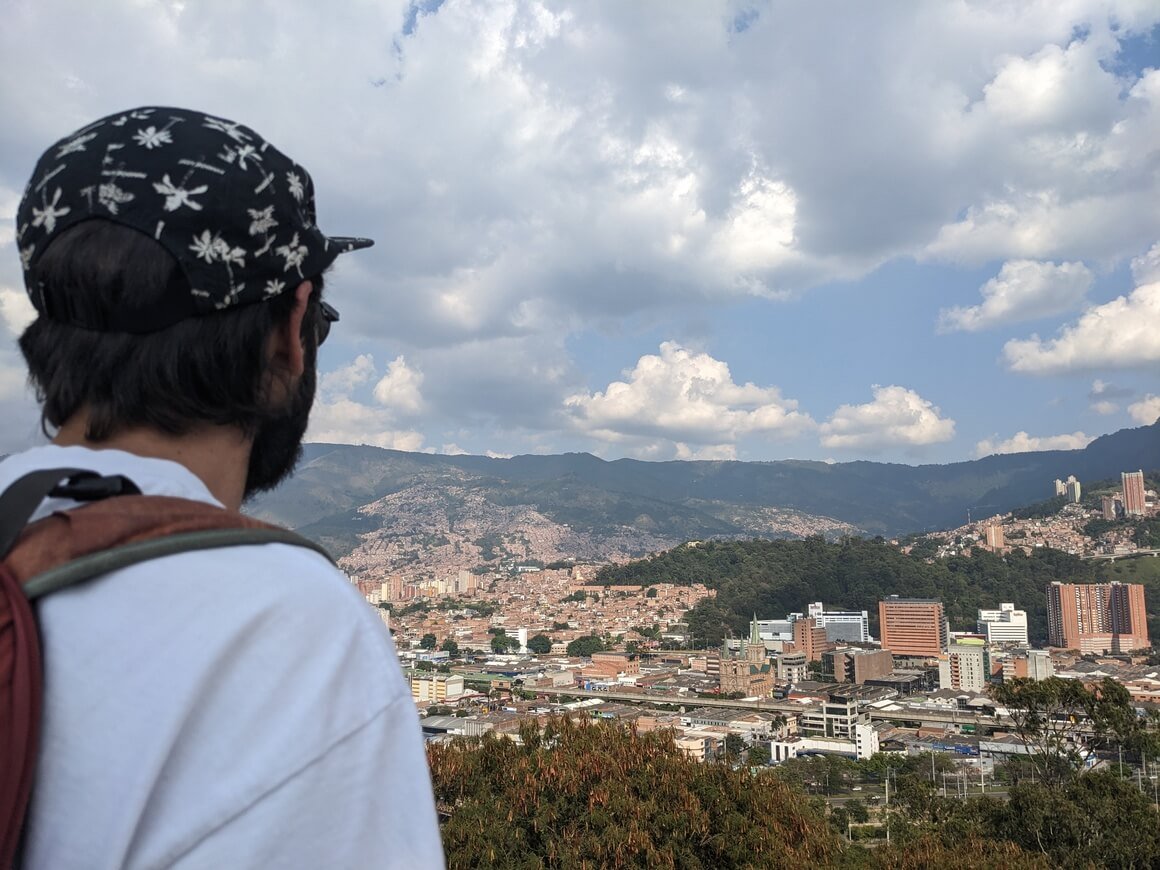
Photo: @Lauramcblonde
The Broke Backpacker is supported by you. Clicking through our links may earn us a small affiliate commission, and that's what allows us to keep producing free content 🙂 Learn more.
Need a Place Quick? Here’s The Best Places to Stay in Colombia:
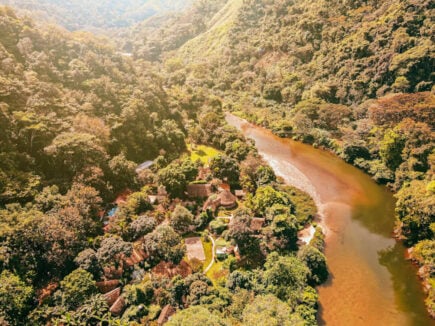
Rio Hostel Buritaca, Santa Marta
Rio Hostel Buritaca sits bang-smack in the middle of the Ciudad Perdida pick-up point, Tayrona National Park, and the Caribbean coastline. Tucked in the jungle, you can spend your day sipping cocktails by the river, hiking to waterfalls, paddleboarding on the river, or doing yoga.

Niddo Suesca
You won’t find a more luxurious glamping experience than Niddo Suesca. Nestled right up against the cliffs with unreal valley views, each room is hand-crafted from local wood and tent canvas. It has all the rustic, eco-friendly vibes, without skimping on comfort.
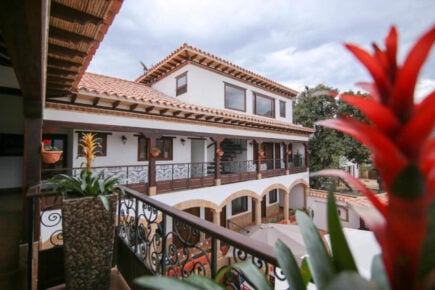
Plaza Medina Hotel, Sachica
Staying at the Plaza Medina is a bit like staying in a Colombian friend’s home. You’ll wake up to the smell of freshly brewed coffee, and be surrounded by stunning interiors that celebrate Colombia’s rich culture. Think colourful details and a warm atmosphere that makes you feel right at home.
These Are The BEST Places to Visit in Colombia
The list includes everything from ancient ruins to national parks to popular cities. Deciding where to stay when backpacking in Colombia all boils down to what you want to do or see in the country. If you’re into history and culture, you’ll fare well in a boutique hotel or hostel in Cartagena or Bogota.
Medellin is the place to be for nightlife, while Santa Marta is the perfect Caribbean beach escape. My tip is to move around a bit. Pick three main towns or cities and make them your launchpad to explore their surroundings accordingly.

Unlock Our GREATEST Travel Secrets!
Sign up for our newsletter and get the best travel tips delivered right to your inbox.
#1 – Bogota – Best City for Urban Culture and Museums
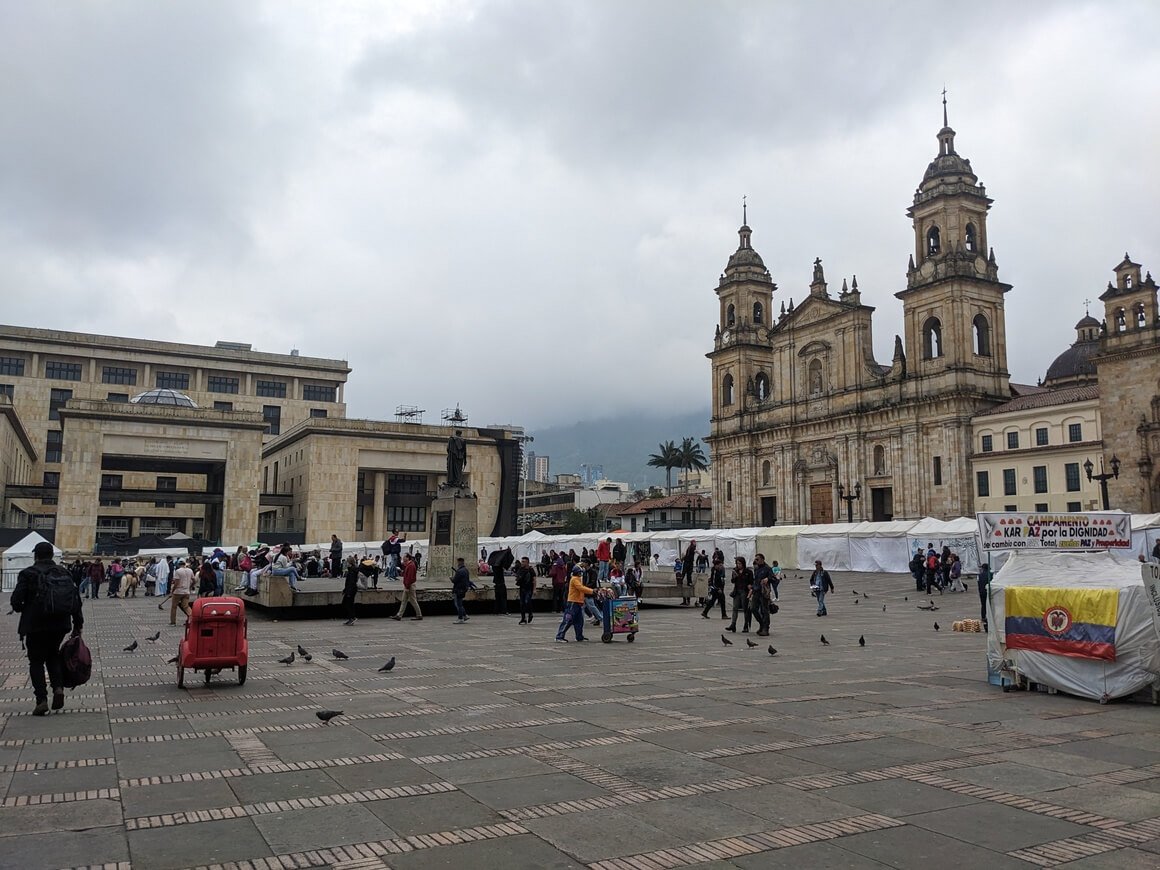
- Capital city
- Visit the Gold Museum
- Take the cable car up Monserrate
- Andean city
Why it’s awesome:
Bogota is Colombia’s capital city and cultural centre. It’s perched way up in the Andes, 8660 meters, to be precise. And while it might seem like another bustling metropolis at first glance, underneath the city buzz is one of the most culturally vibrant places I’ve ever explored.
What to do there:
Don’t let it be a simple stopover after your international flight. You could spend a week getting to know the city and not twiddle your thumbs for one minute. Take the funicular cable car to the top of the Cerro de Monserrate to admire the city from above.
For a strong dose of Colombian culture, The Museo del Oro and Museo Botero are a good place to start.
How to visit:
If you want to travel to Bogota, you can fly into El Dorado International Airport, around 20 minutes from the city centre. Buses, taxis, and Uber are available. Admission to most museums in this famous place in Colombia is affordable and even free on Sundays.
#2 – Villa de Leyva
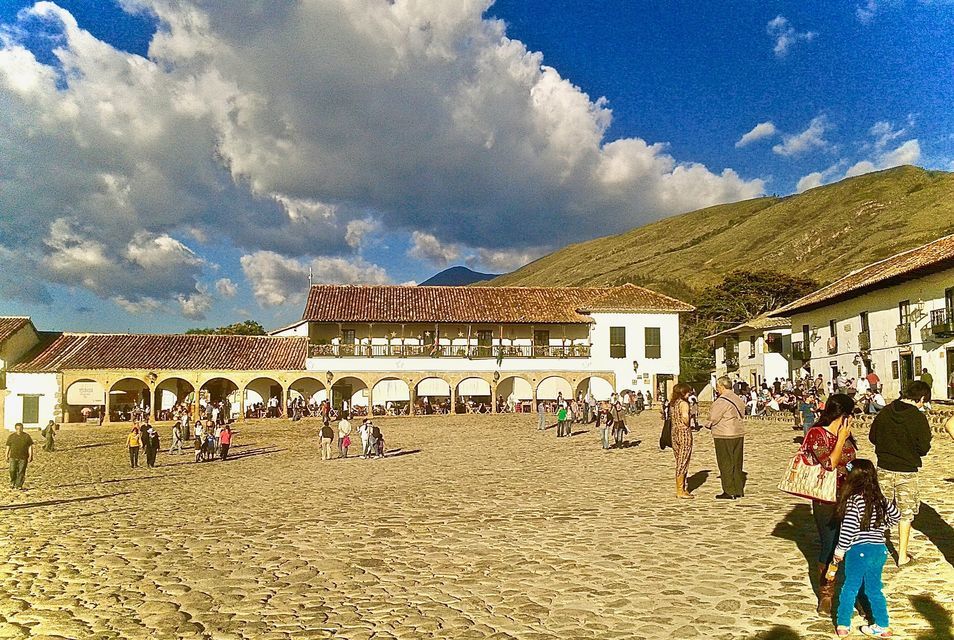
- Colonial town is frozen in time
- Visit the Plaza Mayor
- Nearby the waterfalls and caves of San Gil
- Home to a collection of Cretaceous and Mesozoic period fossils
Why it’s awesome:
Visiting this small mountainside town is a bit like stepping back into the Spanish colonial era. It’s beautiful and still considered under-the-radar. As one of the most well-preserved colonial towns, its central Plaza Mayor is the largest Spanish Square in the country.
Bonus points for being close to San Gil, Colombia’s outdoor adventure hub.
What to do there:
When you aren’t strolling the colonial cobblestone streets, admiring the whitewashed architecture and massive plaza, you’ll want to check out the museums. The La Casa Museo Antonio Narino and the Museo del Carmen showcase religious and sacred objects that date back over 500 years.
How to visit:
The town is around 100 miles (3.5 hours) from Bogota. Once there, the town is small enough to explore on foot. If you’re visiting San Gil, Villa de Leyva is a good spot to stop for the night along your way.
#3 Medellin – Top City for Flower and Plant Fans
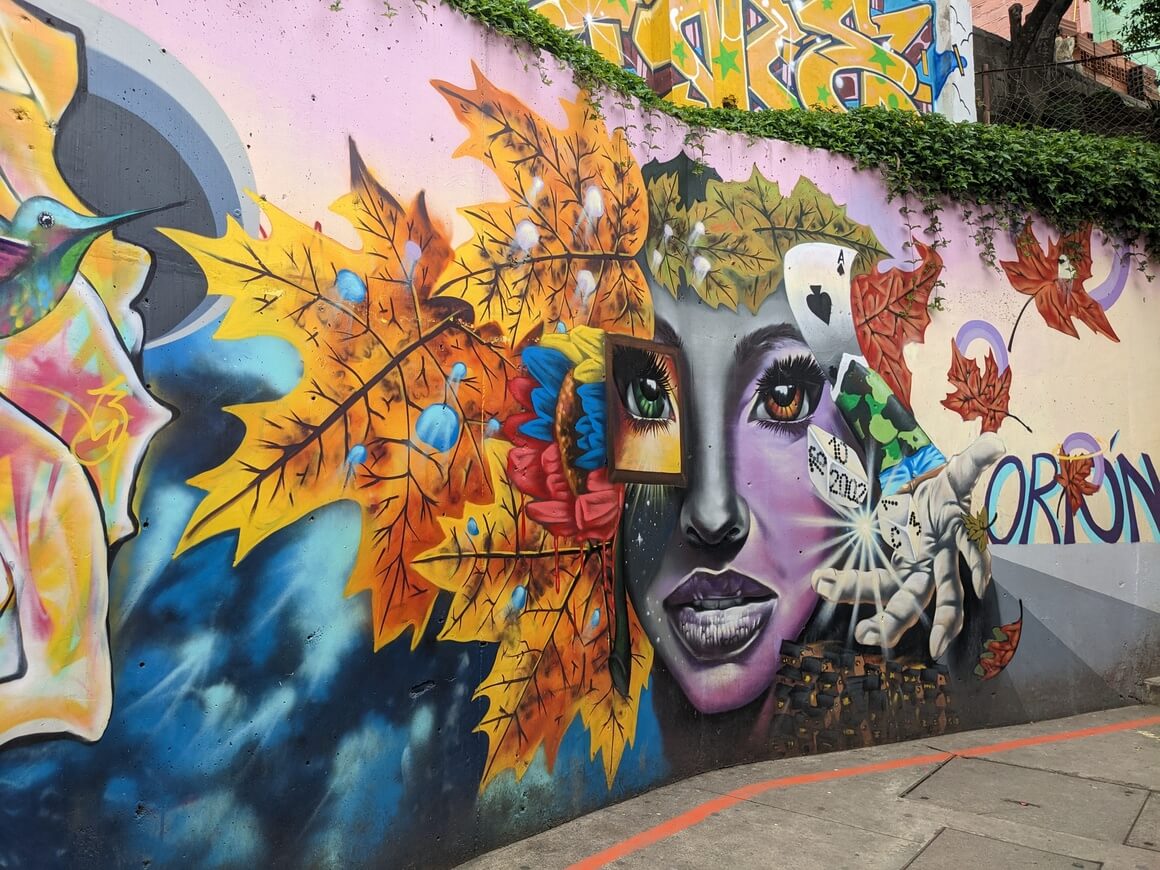
- A modern city with good public transportation
- Known as the ‘City of Eternal Spring’ because of year-round good weather
- Check out the street art at the Comuna 13
- Use the Metrocable Gondola
Why it’s awesome:
Once infamous for its cartel scene, Medellin has totally reinvented itself into a cosmopolitan hotspot in Colombia. It’s this transformation that really makes this city impressive, but it doesn’t hurt that it always feels like spring here.
Laurales, one of its neighbourhoods, was even named one of the trendiest in the world. It’s packed with cool cafes, restaurants, microbreweries and bars.
What to do there:
You can’t miss Comuna 13, where colourful street art tells the story of the neighbourhood’s incredible transformation. I always recommend visiting Arvi Park by Metrocable. There is nothing more invigorating than visiting a vast green space in a big city. You’ll also want to prioritize a local food tour and commit (at least) one evening to the vibrant nightlife.
How to visit:
Jose Maria Cordova International Airport happens to be the first port of call for most tourists in the country. Once in the city, take advantage of the efficient public transportation, including the cable car. There are no steep entry fees around here. Most activities, like exploring parks and street art, are totally free.
#4 – Tayrona National Park – Best Place for Jungle and Beach Adventures
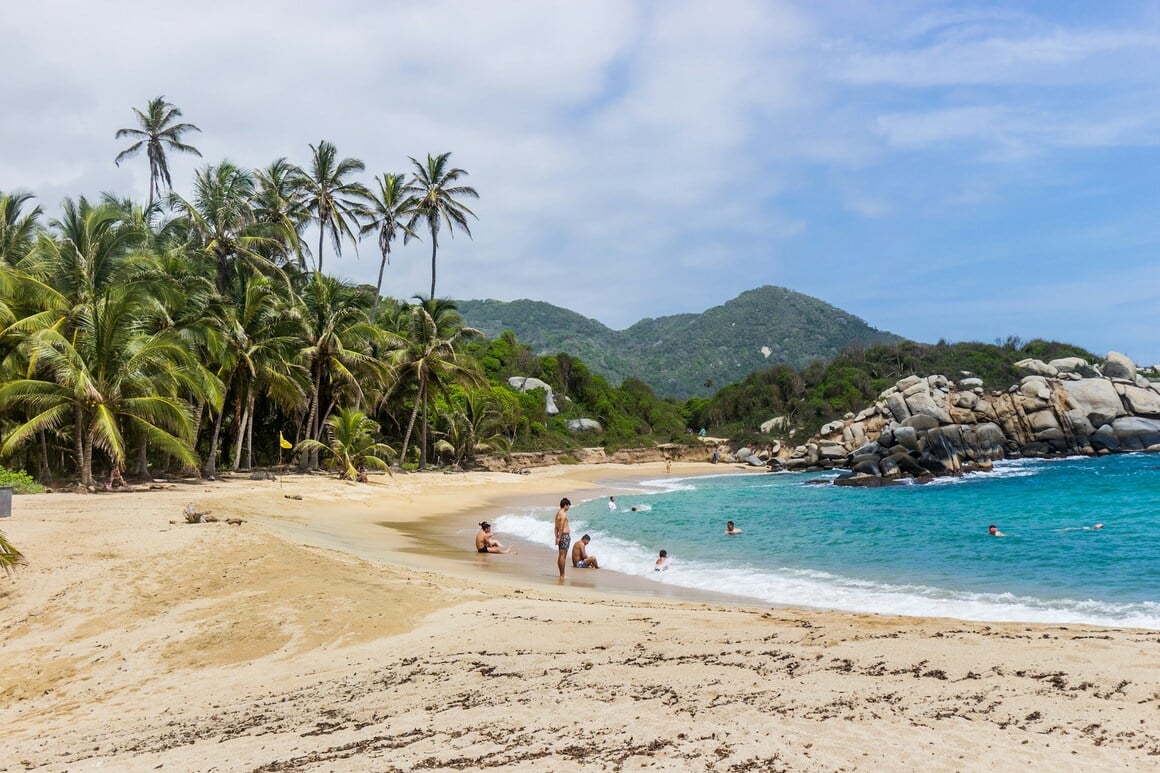
- Ideal for hiking, swimming, and viewing wildlife
- Escape the hustle and bustle
- Don’t forget sunscreen and insect repellent
- Camping and eco-lodge accommodations
Why it’s awesome:
Tucked away on the Caribbean north coast, Tayrona National Park is one of the best places to visit in Colombia for adventure-seekers. Imagine clear water, dense jungle, and golden sand, all packed into one place. Not to mention, the diversity of plants and animals that live there.
What to do there:
Hiking is the main event here. Depending on the route you choose, you could trek through the rainforest and finish with a refreshing dip at a pristine beach like Cabo San Juan. If you’re more interested in water sports, the snorkelling at La Piscina Beach is second to none. There are also basic campsites for overnight treks.
How to visit:
Tayrona is an easy 45-minute bus ride from Santa Marta. I’d recommend joining a tour to help you navigate the park. Or, opt for a sailing excursion from Santa Marta, stopping off at some of the best beaches to snorkel and swim along the way.
Try to avoid visiting between Christmas and New Year, and on other Colombian national holidays. Entry costs around $15 per person.
#5 – Cartagena – Most Romantic City for Couples
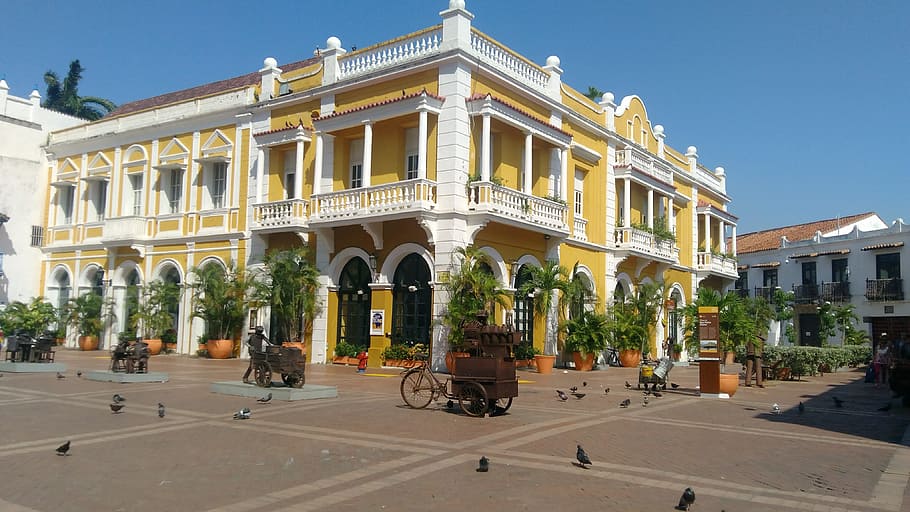
- Busy tourist hotspot
- Visit the restored Casa Pestagua mansion
- UNESCO World Heritage Site
- Coastal city with a different vibe from Bogota and Medellin
Why it’s awesome:
Ignoring the fact that this city is one of the busiest in Colombia, Cartagena remains one of the most exciting places to travel in South America. Dating back to 1533, this old city is famous for its gorgeous colonial Old Town, cobblestone alleys, and impressive colourful churches. Part of its allure is the mix of old and new architecture, with a bustling modern city centre in the background of the Old Town.
What to do there:
The first thing you’ll want to do at this point of interest in Colombia is explore the walled-in complex of the Old Town and admire all the colonial architecture and plazas on foot. There are plenty of places to eat al fresco. Once you’ve seen the major sites, lay out a towel on the beach with a cold drink and call it a day.
How to visit:
The reason this city is so touristy is because it’s a major destination for direct international flights and cruise ship visits. Direct flights arrive from Miami, NY, and Panama City, making it an easy destination for US tourists. It’s pretty small, which means it is easy to see everything in a few short days.

A new country, a new contract, a new piece of plastic – booooring. Instead, buy an eSIM!
Jetpac eSIMs work just like an app: you download it, pick your plan, and BOOM! You’re connected the minute you land. It’s that easy.
Read about how e-Sims work or click below to see one of the top eSIM providers on the market and ditch the plastic.
Grab an eSIM!#6 – San Agustin – Top Spot for Archeological Discoveries
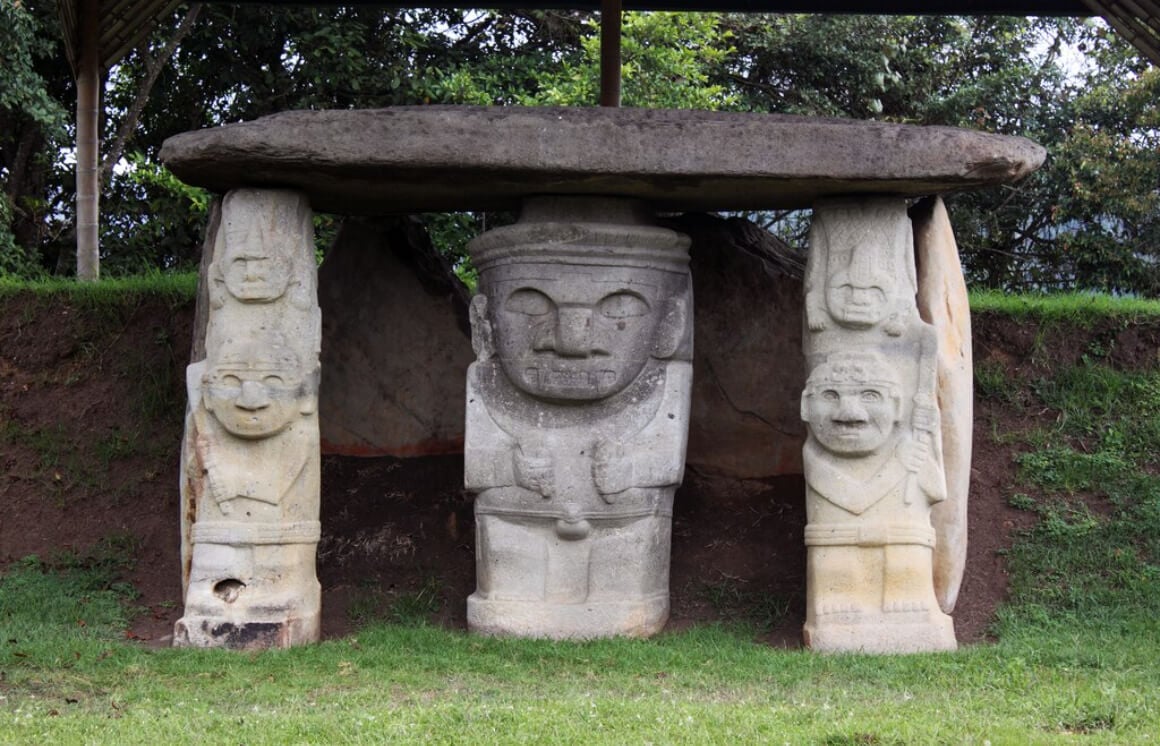
- Home to ancient archaeological sites
- Surrounded by lush jungle and waterfalls
- Quiet, off-the-beaten-path
- Great for history and archaeology fan
Why it’s awesome:
Call me Lara Croft, but nothing gets me as excited as ancient artefacts and hidden crypts. If you get my Tomb Raider reference, San Agustin is a treasure trove of pre-Colombian history.
The area is home to the biggest collection of religious monuments and megalithic sculptures in Latin America. Each massive stone figure tells a story of a civilization long gone.
What to do there:
Visiting the San Agustin Archeological Park is a must. This UNESCO World Heritage Site is where you’ll find statues, tombs, burial sites, and ceremonial sites dating back to the 1st century. Combine that with stunning views of the Andes and you’ll want at least one full day to experience this place.
How to visit:
If you’re wondering how to see this Colombian gem, the best way to get here is to fly into Pitalito and take an hour’s bus ride to the archaeological site. From Bogota, it’s an unappealing 10 to 12-hour bus journey. But once you’re in town, it’s small enough to explore on foot.
#7 – Chingaza National Park – Wonderful Place to Experience Life in the High Andes
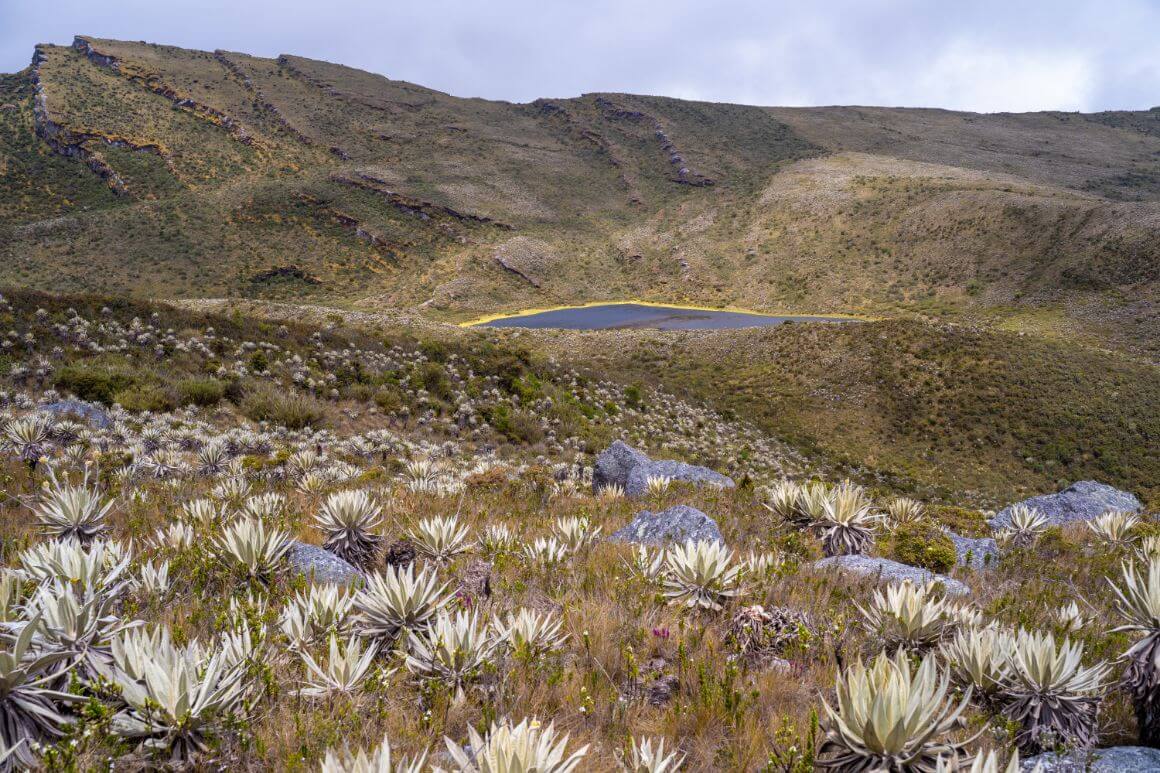
- Peaceful taste of the Andes
- Home to the Andean condo
- One of the biggest nature reserves in Colombia
- Perfect for hiking and nature photography
Why it’s awesome:
Chingaza National Park is one of the largest nature reserves in Colombia. It’s a perfect example of the Alpine Tundra ecosystem and is a great place to learn about this landscape and its crucial role in the global water supply. Plus, the park is home to forty natural glacial lakes and man-made reservoirs.
What to do there:
Hiking is the main attraction here, with plenty of trails leading through this alpine tundra landscape. Birdwatching is also a must, especially if you’re lucky enough to spot an Andean condor soaring overhead.
How to visit:
Chingaza is a 1.5-hour drive from Bogota, making it a convenient place to visit from Colombia’s capital on a day trip. Entrance fees cost around $15 for foreigners, and you will want to book transport and guides ahead of time. The park is protected and has limited access points, making it tricky to visit on your own.
#8 – Zona Cafetera – A Dream Place to Visit in Colombia for Coffee Lovers
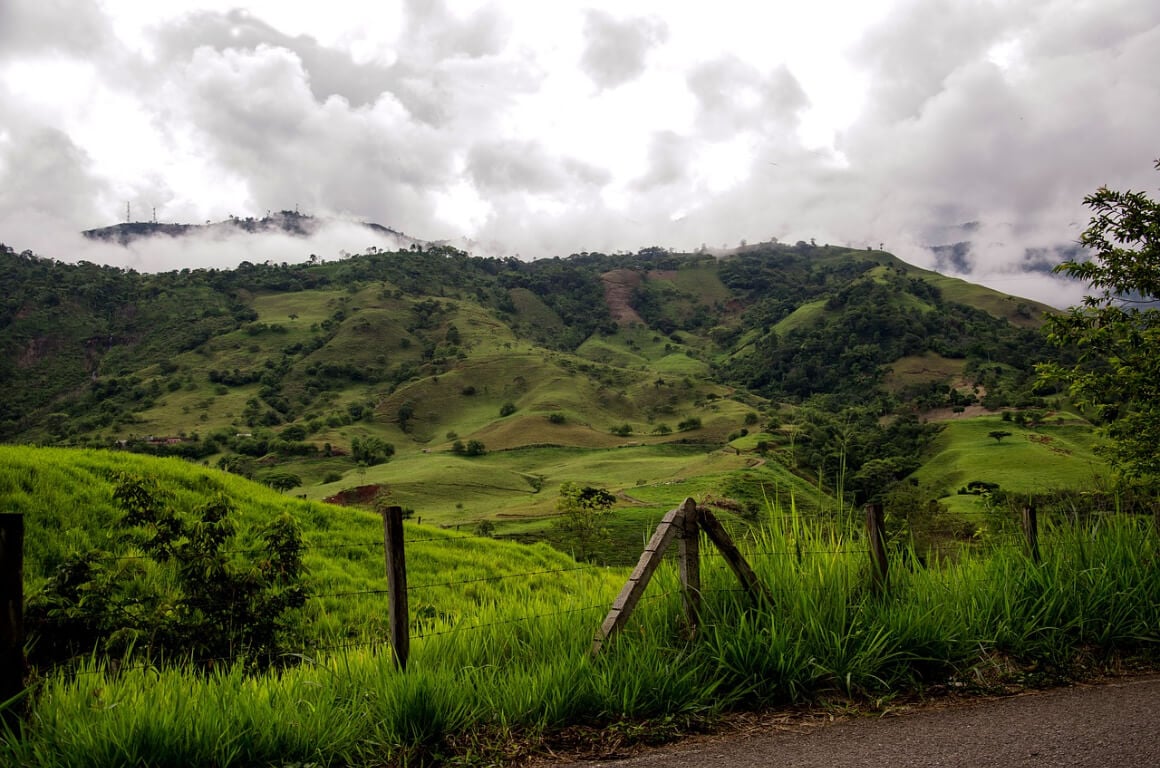
- Coffee farm countryside
- Great for coffee lovers
- Stay on a traditional coffee finca (farm)
- Home to five active volcanoes
Why it’s awesome:
If you’re anything like me and can’t function without your morning coffee, Zona Cafeteria is heaven on earth. We’ve all tasted Colombian coffee. Well, this is where it comes from. Coffee first came to this part of the country in the 17th century, when small farms called finca’s lay the land.
What to do there:
Take a guided tour of a coffee farm and learn about the process from bean to cup. You should also indulge in a fair share of tastings to sample different blends and roasts. Plus, hiking through the countryside and visiting small towns like Salento for lunch is a must.
How to visit:
You can easily reach Zona Cafetera by flying into Armenia, Pereira, or Manizales – the three main cities in the region. From Medellin, the flight is around 40 minutes. You can also drive, but I would only recommend this if you have a lot of time to spare (and a reliable 4X4).
#9 – The Amazon Rainforest – Classic Place for the Bucket List Rainforest Experience
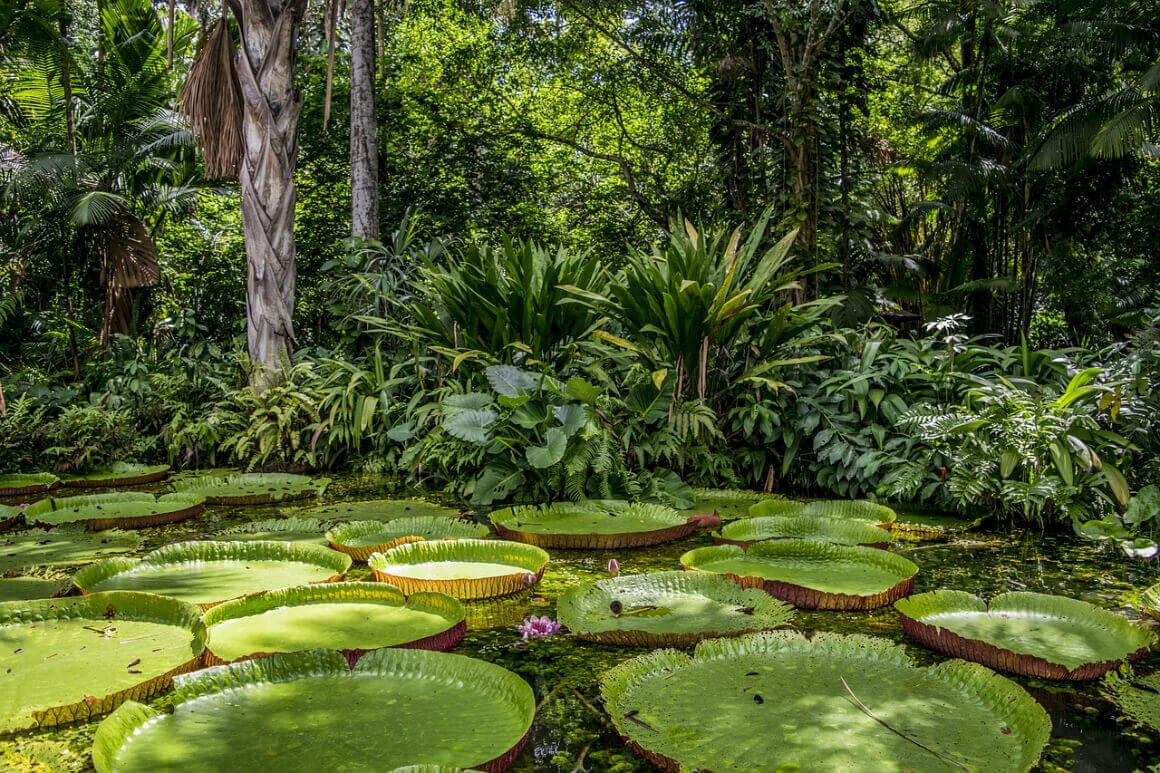
- Quintessential South American adventure
- Home to the longest river in the world
- The world’s biggest rainforest
- 100s of species of wildlife, reptiles, and plants
Why it’s awesome:
It’s the Amazon – surely this attraction in Colombia speaks for itself? Colombia’s slice of the famous rainforest may not be the most popular, but that’s exactly what makes it such a gem. With fewer crowds, you’ll have a better chance of spotting the wildlife you’ve always dreamed of.
What to do there:
You need to visit the Amazon with a guide. It’s literally a jungle out there! The best thing to do is to join a multi-day tour where you can spend a night in the jungle.
Do yourself a favour and book a boat trip along the Amazonas River. Here, you can spot pink dolphins and over six hundred bird species. Visiting the indigenous communities of the Ticuna and Cocomos is also worth planning a trip around.
How to visit:
Getting to the Amazon can be tricky, but starting your jungle excursion in the regional capital of Leticia is the way to go. Tucked away under the trees, this remote outpost is only accessible by plane. From there, you can explore the Amacayacu National Park.
#10 – The Salt Cathedral of Zipaquira – Most Unique Cathedral in South America
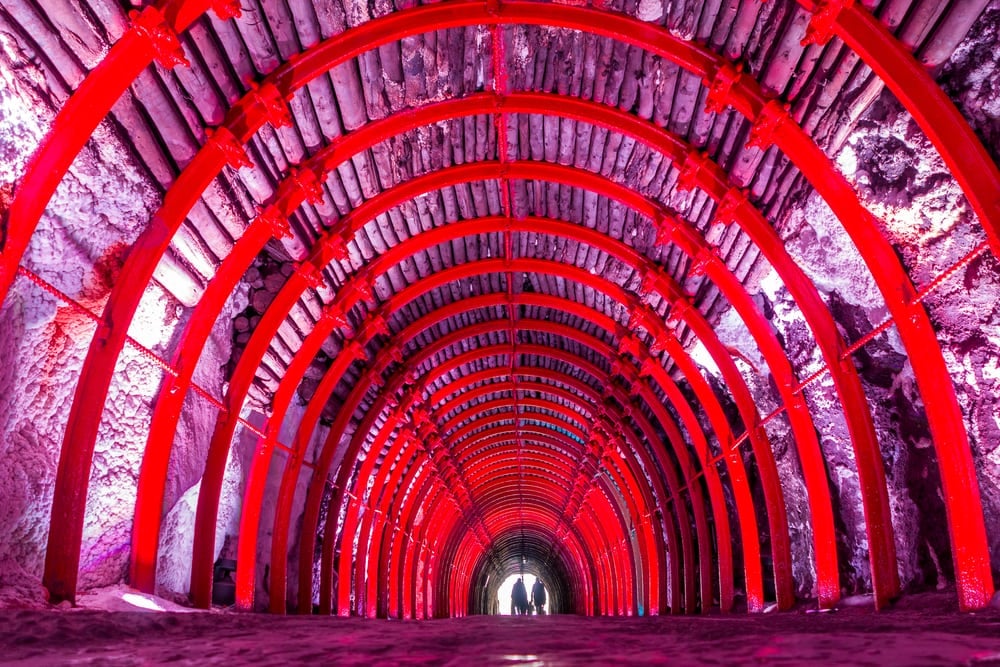
- sCathedral carved into a salt mine
- *Not advised for claustrophobic travellers*
- Stacked with work from top artists and sculptors
- Attend a Sunday service
Why it’s awesome:
The Zipaquira Salt Cathedral is a massive complex of underground chapels carved into the ground of an unused salt mine. Imagine stepping 250 feet below the surface to explore an architectural wonder created by salt miners. Inside, you’ll find hundreds of works of art and sculptures created by the country’s top artists.
What to do there:
Interestingly, the chapel and cathedral are still active places of worship. This means you can attend a Sunday service and even get married in this underground landmark in Colombia. Don’t miss the light show and the museum, where you can learn about the fascinating history of how this cathedral came to be.
How to visit:
Just 32 miles north of Bogota, Zipaquira is easy to visit on a day trip from the capital. The entrance costs around $13 per adult. Make sure to wear comfortable shoes since you’ll be walking through dimly lit chambers. Guided tours last around one hour.

Wanna know how to pack like a pro? Well for a start you need the right gear….
These are packing cubes for the globetrotters and compression sacks for the real adventurers – these babies are a traveller’s best kept secret. They organise yo’ packing and minimise volume too so you can pack MORE.
Or, y’know… you can stick to just chucking it all in your backpack…
Get Yours Here Read Our Review#11 – Providencia – Ideal for Scuba Diving and Snorkeling
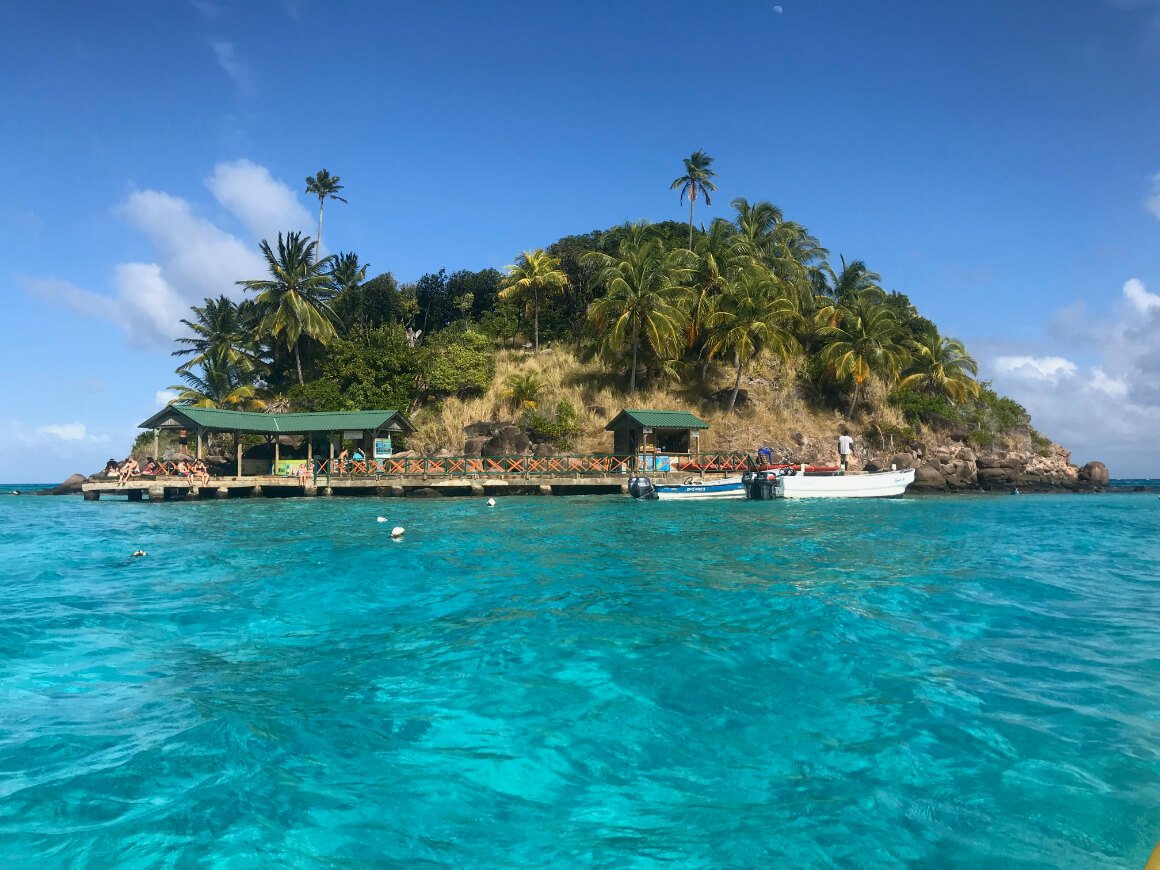
- Remote Caribbean island
- In the ‘Sea of Seven Colors’
- Coral reefs and white sand beaches
- Centre of the Caribbean UNESCO Biosphere Reserve
Why it’s awesome:
Providencia is a small island that looks more like it belongs in Central than South America. It’s over 450 miles from the Colombian mainland, in a part of the Caribbean that is famous for its hues of blues and greens.
What’s more, the island is home to some of the most untouched beaches that out-dazzle some of the top Caribbean Islands, with little development to speak of. Let’s hope it stays this way…
What to do there:
As the centre of a UNESCO Biosphere Reserve, Providencia is teeming with marine life. Keep your eyes peeled for turtles, stingrays, and reef sharks. Scuba diving and snorkeling are popular here but don’t feel bad if you just want to lounge around on the golden beaches with a book. I can totally relate.
How to visit:
This small 6.5-square-mile island is closer to Nicaragua than it is to Colombia. To explore Colombia’s prime Caribbean real estate, you need to take a 20-minute flight or a catamaran from San Andres, a larger island that welcomes flights from Bogota, Cartagena, and Medellin. Satena is the most reliable airline to fly the route, costing between $60 and $100 for a round trip.
#12 – Isla Baru – Best Beach near Cartagena
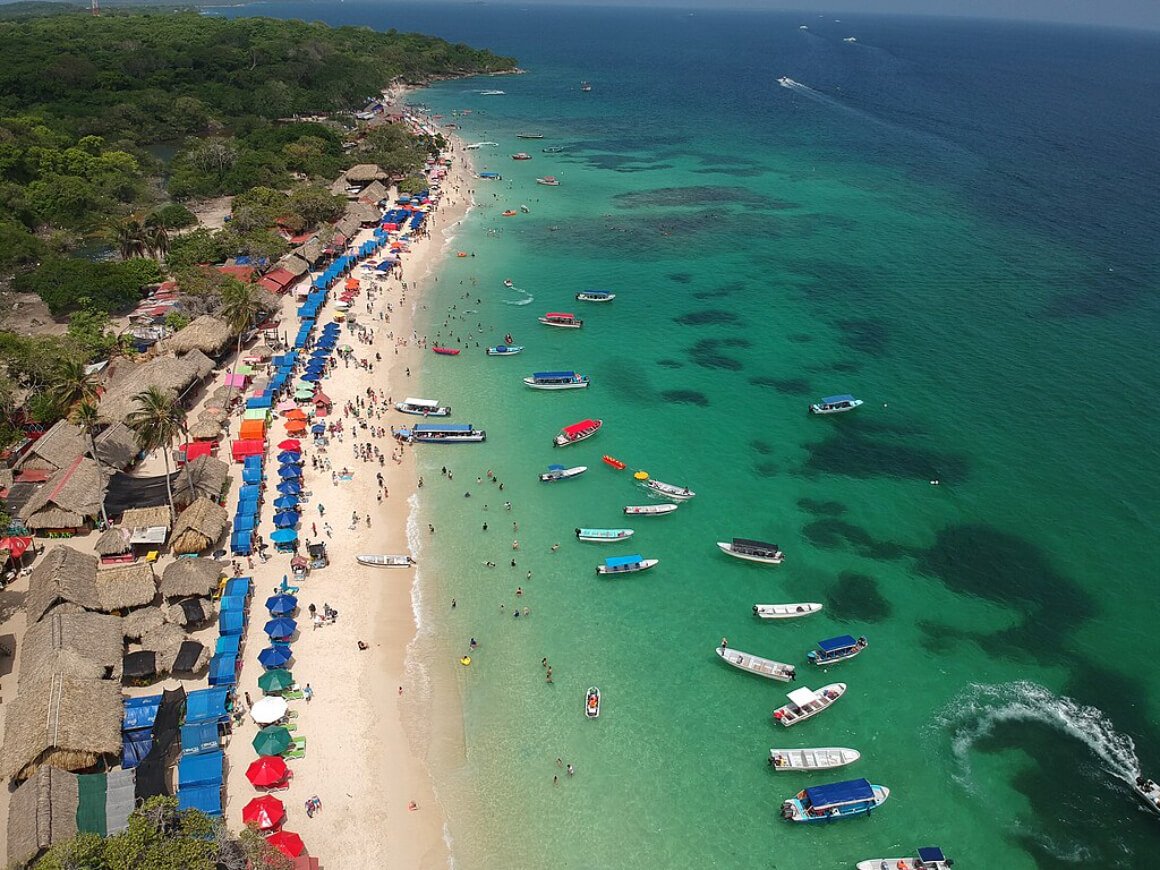
- Home to Playa Blanca
- Family-friendly beach for swimming and watersports
- Close to Cartagena
- Tropical climate and warm water
Why it’s awesome:
Isla Baru is known for being Cartagena’s best ‘nearby’ beach. What was once a hotspot for day trips is now a self-sufficient destination in itself, thanks to the development of the Sofitel Baru Casablanca Beach Resort and the Agua Azul Beach Resort.
What to do there:
Playa Blanca is the star of the show here, and trust me, it’s one of the most beautiful beaches in the country. It helps that it has a much more relaxed vibe compared with other Caribbean beaches.
Swimming, snorkelling, and just relaxing in the sun are the name of the game here. That said, there are opportunities to go jet-skiing, kayaking, or join a boat tour of the surrounding islands.
How to visit:
Isla Baru is just a 45-minute ferry ride from Cartagena, costing $19 per direction. You can also catch a bus or minivan across a new bridge connecting the island to the mainland. On the island, there are no entry fees for the beach, but since it’s so conveniently close to Cartagena, you can expect some crowds when visiting Colombia’s best beach.
#13 – San Gil – Interesting Place for Thrill-Seekers
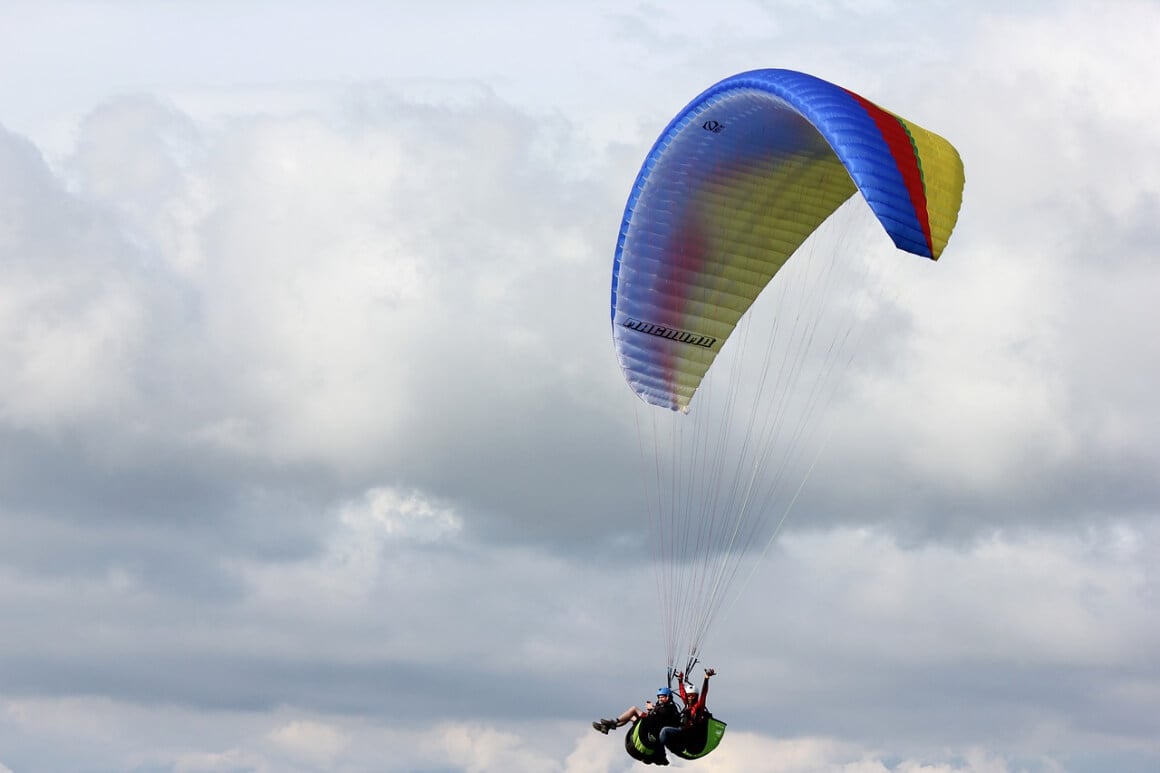
- Outdoor adventure hub
- Great for rafting, paragliding, and caving
- Surrounded by stunning natural scenery
- Laid-back atmosphere
Why it’s awesome:
San Gil is considered the adventure sports capital of Colombia. Outdoor fans love it here. And for good reason. It’s the place to base yourself for white water rafting, exploring caves, rappelling down cliff faces, and trekking through forests.
The town itself is small, but its proximity to the Chicamocha National Park and nearby canyons makes it a playground for adventurous travellers.
What to do there:
Hardcore adventures include advanced-class white-water rafting, rock climbing and abseiling, trekking and hiking, bungee jumping, mountain biking, and paragliding. The list goes on… There are also some more chilled adventures to be had in these parts, such as hiking in the Parque El Gallineral or to the Pozo Azul swimming hole.
How to visit:
San Gil is a seven-hour drive from Bogota. Another option is to fly into Bucaramanga and then take a 5-hour minibus. Local buses operated by CotraSangil also make the journey. Once you arrive, there are plenty of adventure companies that can arrange tours and activities for you.
#14 – Barichara
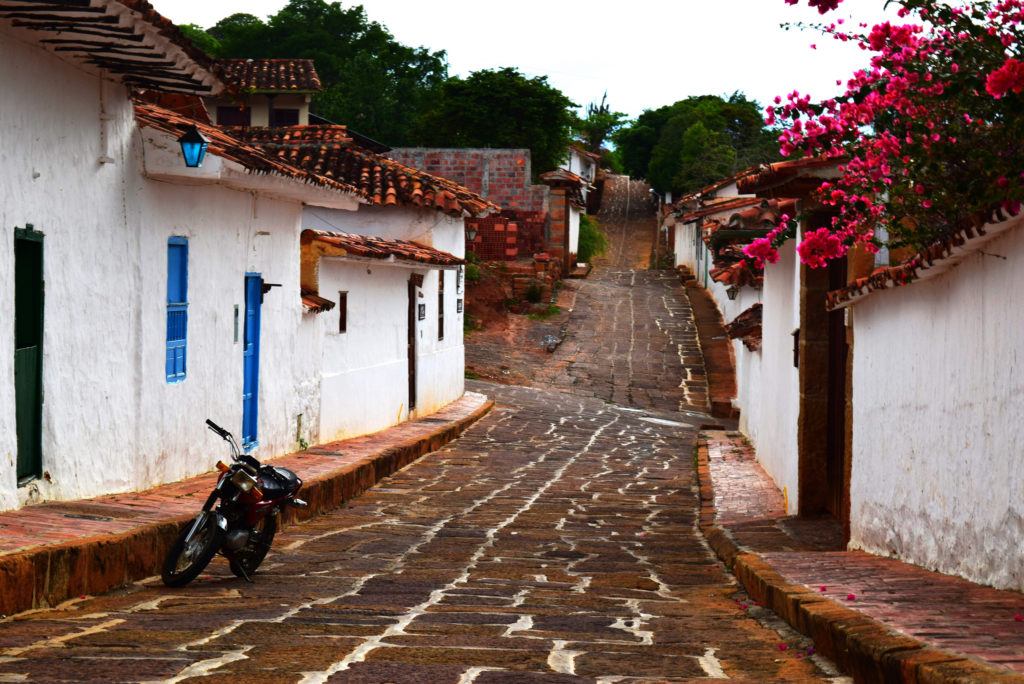
- Picturesque colonial town
- Tranquil, slow-paced atmosphere
- Great for experiencing local Colombian charm
- Close to San Gil
Why it’s awesome:
Barichara is often regarded as one of Colombia’s best-kept secrets. And by this, I mean it’s still raw and charming and not too touristy. It’s one of the most well-known towns in Santander, not far from the city of Bucaramanga.
From the moment you arrive, you’ll be enchanted by its romantic ambience, thanks to the old colonial buildings and artisanal shops.
What to do there:
Like any small village, I recommend strolling the cobblestone streets and admiring the architecture, shops, and restaurants on foot. There are plenty of places to eat outdoors here (for an adventurous regional speciality, try the giant ants—yes, I said ants). Another Colombian must-see is climbing to the top of the Church of Santa Barbara and taking in the scenery.
How to visit:
One of the reasons this town is known as the ‘prettiest town in Colombia’ is that it’s quiet and not overpopulated with tourists. The reason? Well, it’s quite a distance from Botoga (a 7-hour drive) and Medellin (a 10-hour drive).
It’s about a 40-minute drive from San Gil, which makes it a good stopover if you find yourself near the adventure capital.
#15 – La Guajira Peninsula – Top Place for Sea and Desert Contrasts
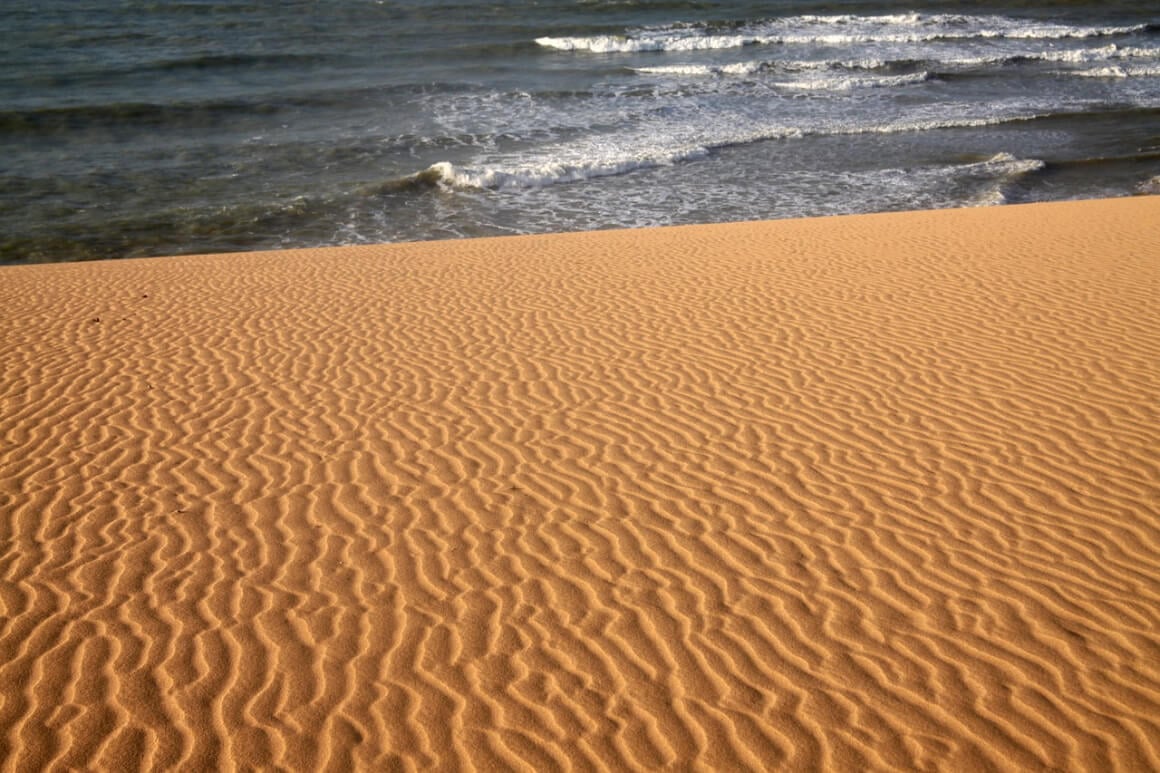
- The most northern point of South America
- Unique sand dune desert landscape
- Home to the Indigenous Wayuu people
- Remote and off-the-beaten-path
Why it’s awesome:
The La Guajira Peninsula is the largest arid landscape in Colombia. But it’s not like other deserts. Wild expanses of rolling sand dunes meet the stunning Caribbean coastline creating a striking contrast in this remote corner of the country.
Besides its juxtaposed environment, it’s home to the Wayuu people, who live in small remote villages throughout the peninsula.
What to do there:
You can’t miss the ocher dunes of Punta Gallinas and Cabo de la Vela. Ask your guide to take you to a local Wayuu village, where you can purchase local hand-woven bags. For a more authentic experience, book a tour with a Wayuu guide – who better to show you this top place to visit in Colombia than those who have called it home for ten thousand years?
How to visit:
To experience this incredible sandy wilderness, you’ll need to organize a guided tour from Riohacha. Plan to spend a night or two on the peninsula and a few extra days at Playa Taroa (an exquisite Caribbean beach).
Drink water from ANYWHERE. The Grayl Geopress is the worlds leading filtered water bottle protecting you from all manner of waterborne nasties.
Single-use plastic bottles are a MASSIVE threat to marine life. Be a part of the solution and travel with a filter water bottle. Save money and the environment!
We’ve tested the Geopress rigorously from the icy heights of Pakistan to the tropical jungles of Bali, and can confirm: it’s the best water bottle you’ll ever buy!
View on REI Read the Review#16 – Cano Cristales – Great Place for Couples
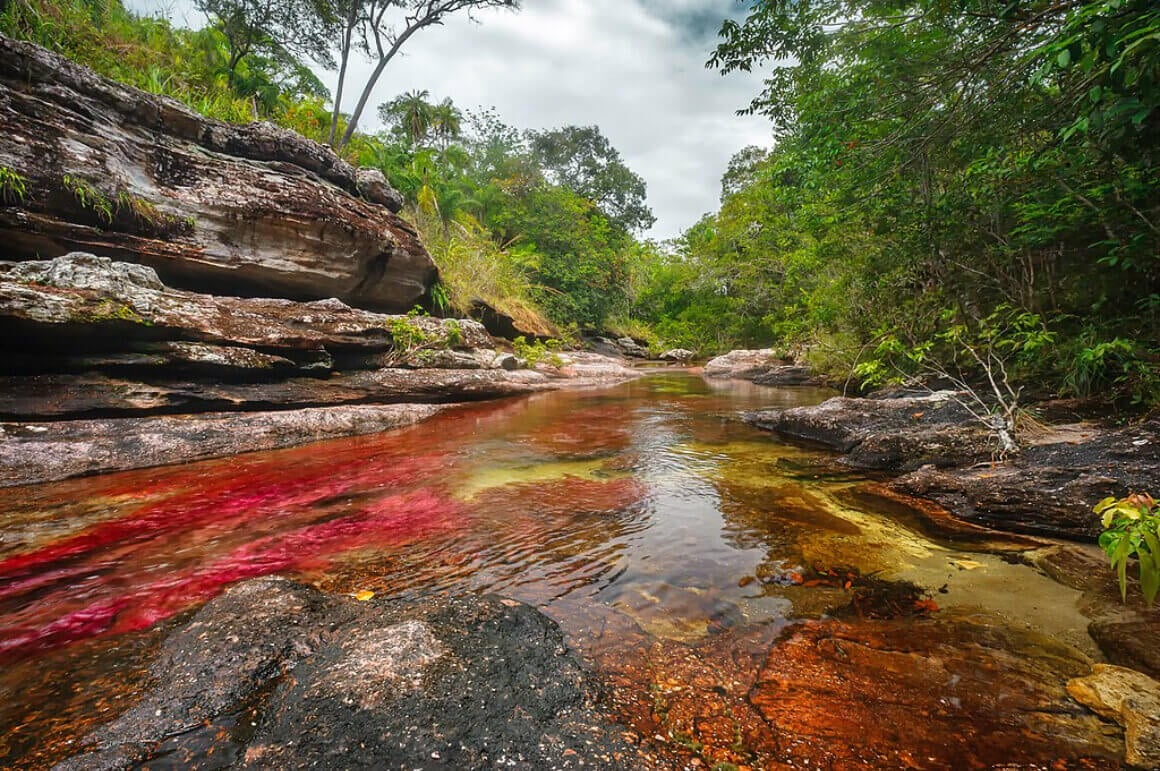
- Known as the ‘River of Five Colors’
- Natural wonder in the Serrania de la Macarena
- Best to visit during dry season
- Great for hikes and nature photography
Why it’s awesome:
If a rainbow and a river had a baby, it would look like the Cano Cristales. Called the ‘liquid rainbow,’ this river transforms into a spectacle of red, yellow, green, blue, and even black – thanks to a rare aquatic plant in the water. The result is a dazzling display of colours seen through crystal clear water.
What to do there:
Hiking is the name of the game around here. The river is located in the Serrania de la Macarena National Park, where you can hike through the jungle and along the river, passing waterfalls and natural swimming pools along the way.
How to visit:
The national park is pretty remote. And that’s an understatement of epic proportions. It’s located south of La Macarena, along a route that includes a ferry and toll roads.
Only 200 people can visit the river each day, and you need to book your spot with a local tour company well in advance. The best time to visit is in the dry season, particularly between July and October.
#17 – Valle de Cocora – Great Place for Hikers
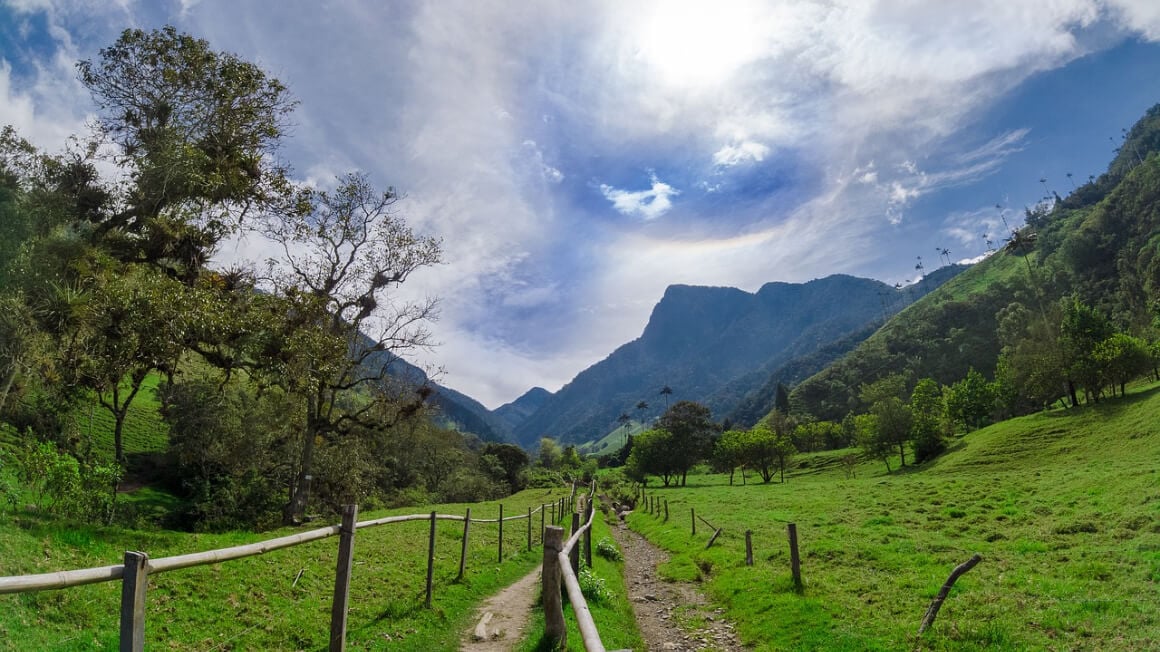
- Famous wax palm trees
- The heart of Colombia’s coffee region
- Great for hiking and birdwatching
- Not far from Salento
Why it’s awesome:
If this valley looks familiar, it’s because it served as the real-life inspiration for the Disney film Encanto. But the valley has long been a Colombian must-see with its massive forest of wax palm trees (which can reach up to six stories high, btw). Combine this with misty mountains and a lush landscape, and you’ll be snapping photos for your Instagram feed. all. day. long.
What to do there:
This is one of those places you need to see and appreciate. The best way to visit is to follow a 9-mile hike along the river into the hills. There are several other trails to walk or hike along, suitable for everyone from beginners to advanced hikers. The Acaime Hummingbird Sanctuary is another cool place to check out in the valley.
How to visit:
Take a 30-minute Jeep ride into the valley from the nearby town of Salento. You can catch a ‘willy,’ a traditional Colombian jeep, from the central square in Salento. It’s free to explore the valley, but the hummingbird sanctuary might charge a small entrance fee.
#18 – The Rosario Islands
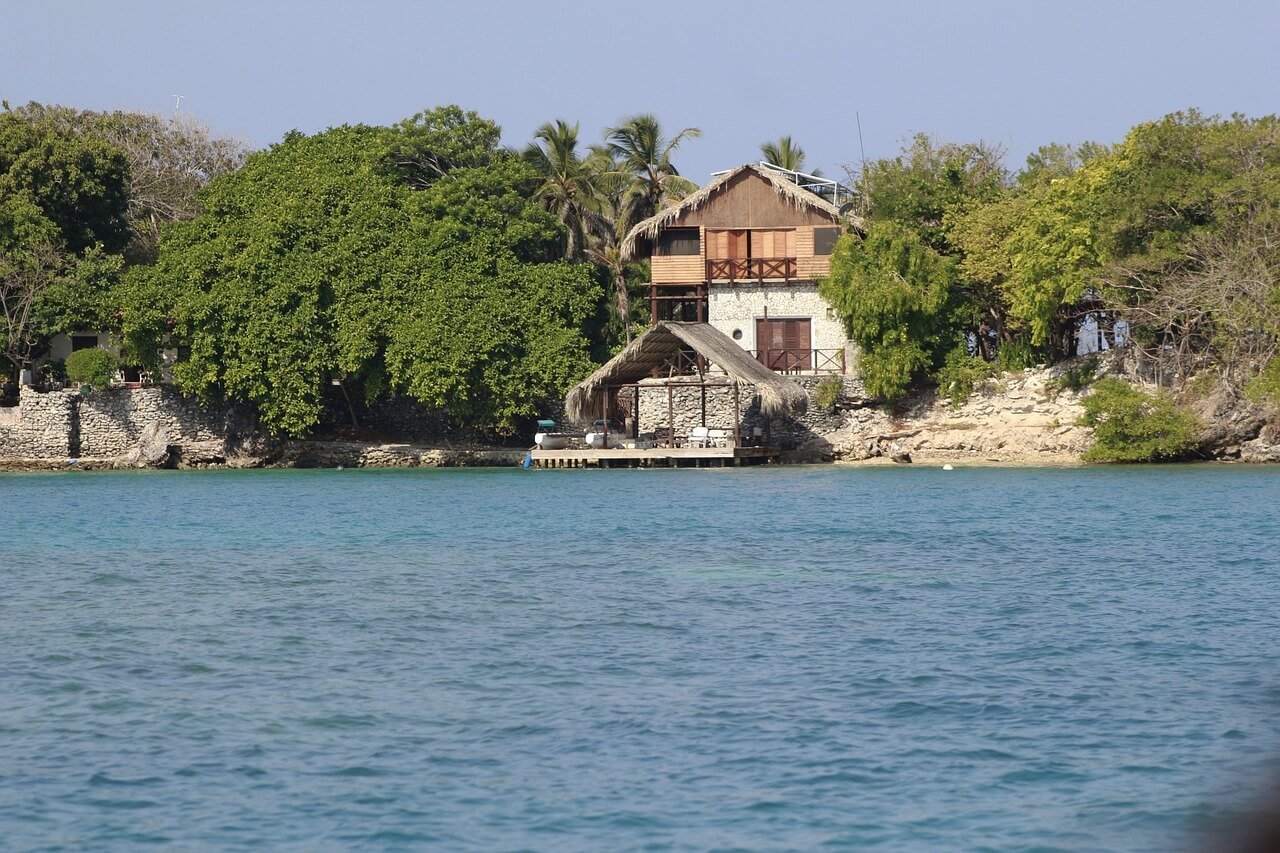
- A tropical escape off the coast of Cartagena
- Famous for its coral reefs
- Great for diving and snorkelling
- Home to some luxury resorts and eco-lodges
Why it’s awesome:
When the cruise ship crowds of Cartagena get too rowdy, you can retreat to the Rosario Islands. They’re a slice of Caribbean paradise, home to coral reefs bursting with life, clear, warm waters, and that classic Caribbean vibe.
The eco-lodges around here also make it a great destination for a sustainable vacation. After all, even we backpackers need to start watching our carbon footprints! There are some good hostels in Rosario to check out too.
What to do there:
The crystal clear water and pristine beaches speak for themselves – this is one of those places to visit in Colombia where you don’t want to do much. Spend your days relaxing on the beach, snorkelling, or exploring the coral reefs with a dive tank.
With 26 islands in this little archipelago, there are also beautiful mangrove forests to kayak through. Or, you could switch things up with a cocktail in hand at one of the beach clubs at Isla Grande.
How to visit:
Boats depart from Cartagena pier to the Rosario Islands daily. The journey takes around an hour, which makes it easy for a day trip (although I recommend spending at least one night). Boat prices vary, costing between $20 and $30 for a one-way trip.
#19 – Barranquilla – The Best Place to Experience Colombia Carnival
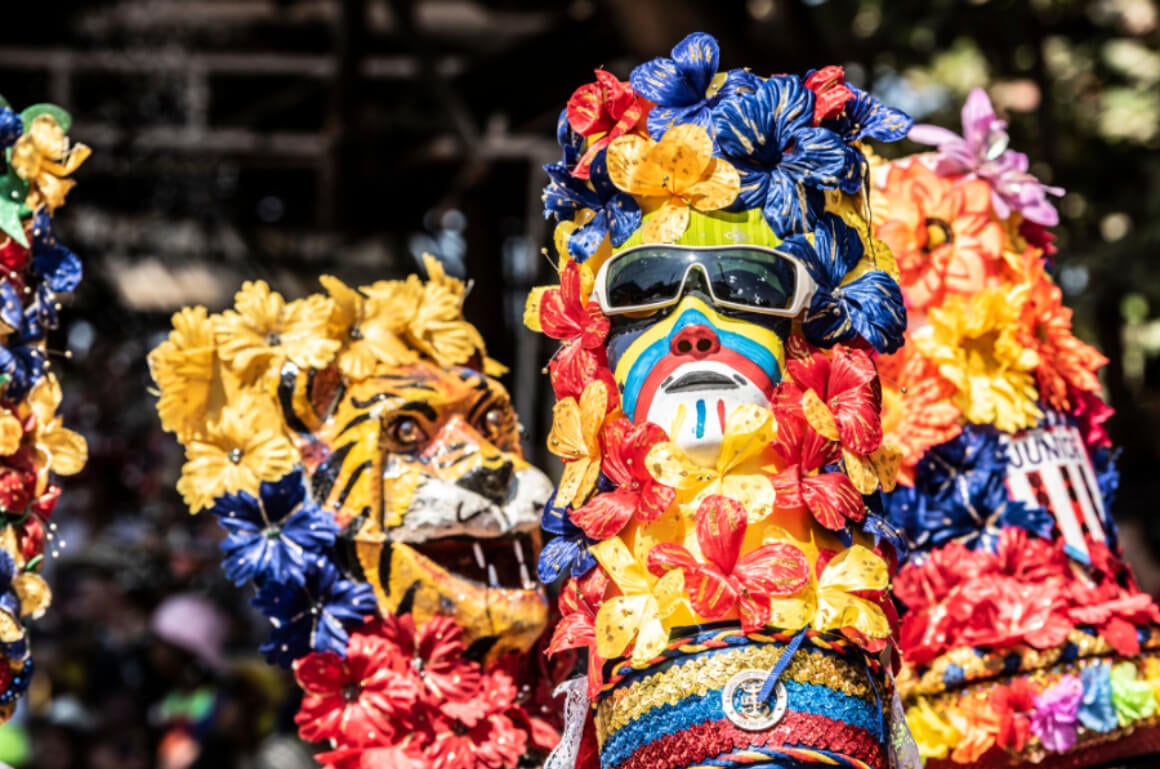
- The host city of the Colombian Carnival
- Caribbean port city
- Hotspot for music, dance, and culture
- A good mix of modern and historical attractions
Why it’s awesome:
Did you know that Colombia hosts the second-largest carnival in South America? It begins with a Battle of Flowers Parade, a coronation of the King and Queen, and includes a Great Troupes Parade and the Death of Joselito Carnival. Each event is more exciting than the next. And it all takes place in a city called Barranquilla.
What to do there:
As far as Caribbean cities go, Barranquilla is a low-key one. That is, aside from the one a week a year, it hosts the carnival. There are a few events I would say bring an entirely new life and energy into a city. This is one of them. Listed as a UNESCO Intangible Cultural Attraction, it is absolutely worth planning your trip around this event.
How to visit:
Barranquilla is a short flight from Bogota, Medellin, or Cartagena. It’s also possible to reach by bus from any of these cities, but flights are surprisingly cheaper and quicker. The city is pretty big, so you’ll need to use taxis or Uber to explore Colombia’s carnival city.
If you visit during Carnival (or any festival in Colombia), make sure you book your accommodation – and even restaurant reservations – WELL in advance!
#20 – Cali – Best Place to Learn to Salsa Dance

- Salsa dancing capital of the world
- Big nightlife scene
- Surrounded by mountains
- Home to the September Festival Mundial de Salsa
Why it’s awesome:
As darkness falls on Cali, the city starts to pulsate with the vibrant energy of salsa dancing and Latin beats. The atmosphere is electric, and it’s easy to see why this is considered the salsa capital of the world.
Plenty of salsa clubs offer group and private classes. Even those of us with two left feet are encouraged to feel the beat!
What to do there:
Cali is the place to be if you want to spend some time mastering the technical steps of the salsa dance. It’s also home to famous clubs, like Zaperoco Bar and Siboney. Adventure junkies could also visit the Valle del Cauca nearby to tube, zipline, and hike waterfalls. It’s nice to have the option to switch things up a bit!
How to visit:
Cali is well connected with daily flights from all of Colombia’s major cities. Do yourself a favour and get your hands on a ticket to Delirio, a cabaret salsa show that will be sure to blow your mind. If you get a chance to visit in September, your trip could coincide with the Festival Mundial de Salsa, which welcomes thousands of dancers from across the globe.
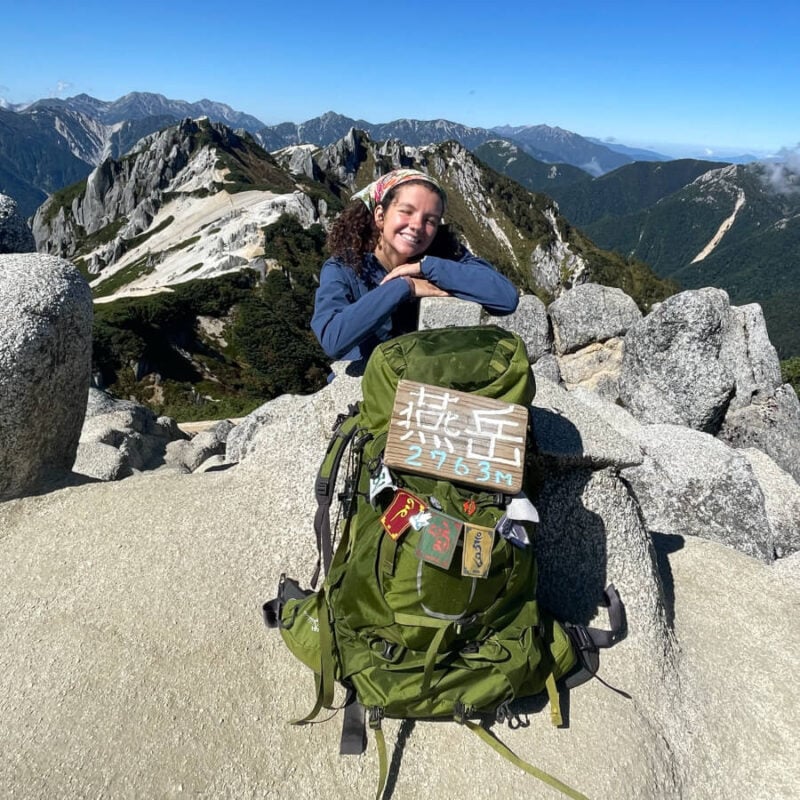
We’ve tested countless backpacks over the years, but there’s one that has always been the best and remains the best buy for adventurers: the broke backpacker-approved Osprey Aether and Ariel series.
Want more deetz on why these packs are so damn perfect? Then read our comprehensive review for the inside scoop!
View on Osprey View on REI#21 – Cabo de la Vela – Best Beach for Windsurfing
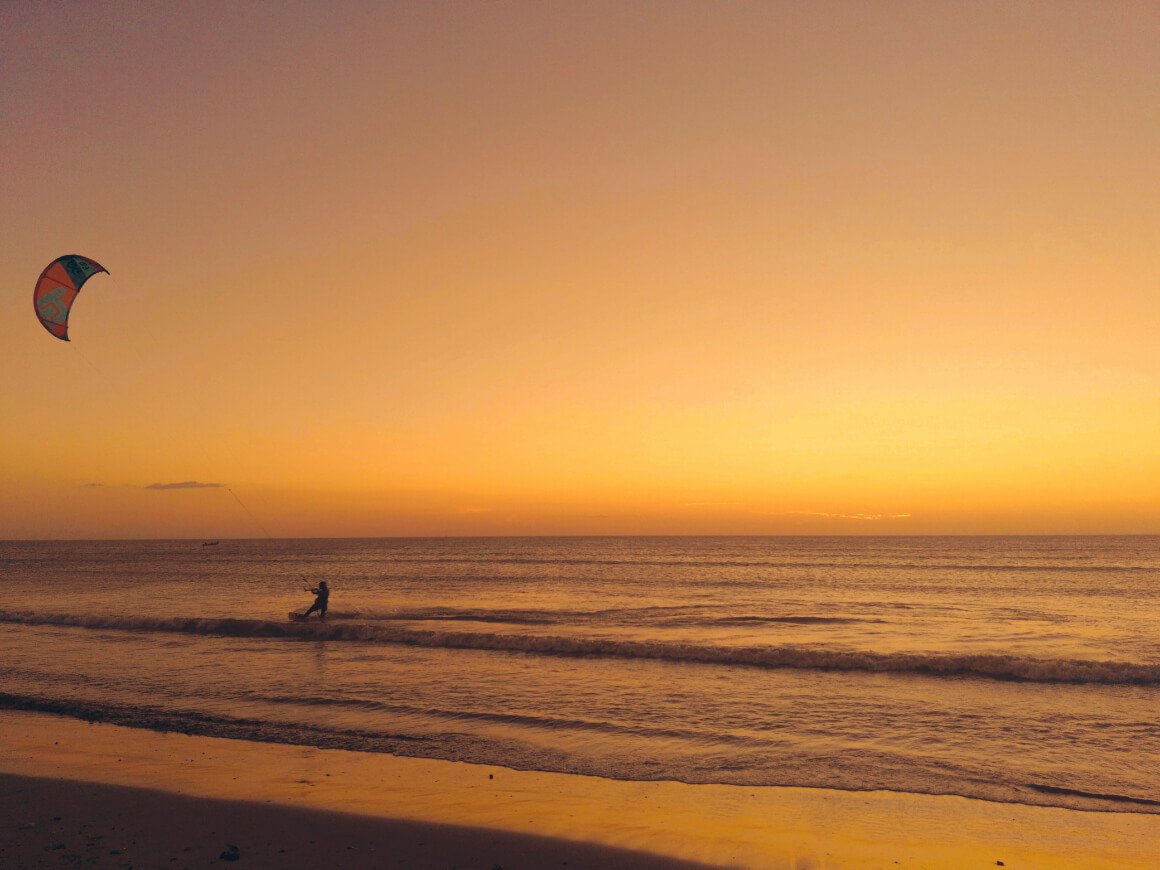
- Beach along the Guajira Peninsula
- Known for its desert-meets-ocean landscape
- Great for kite surfing
- Home to the Indigenous Wayuu People
Why it’s awesome:
We’ve covered the Guajira Peninsula; now let’s zoom in on one of its best towns. Visiting Colombia’s Cabo de la Vela feels like landing on another planet. It’s a small beach town at the country’s northernmost tip, where rolling sand dunes meet tropical Caribbean seas.
Beauty and adventure aside, the Wayuu people who live there add a layer of culture to the town.
What to do there:
Relax on the beaches, kite surf along the windy coastline, or hike to the top of the sand dunes like the Pilon de Azucar. And don’t miss the chance to immerse yourself in the Wayuu culture. A visit to a local village will give insight into their traditions, craftsmanship, and way of life.
How to visit:
Getting to Cabo de la Vela is all part of the adventure. It’s by no means central, so be prepared for a bit of a trek! You’ll either need to catch a flight or a bus from Bogota or Medellin to Riohacha and then continue in a 4X4 to the beach town.
The journey might take a day, but it is well worth the effort for the otherworldly scenes and beautiful beaches.
#22 – Salento
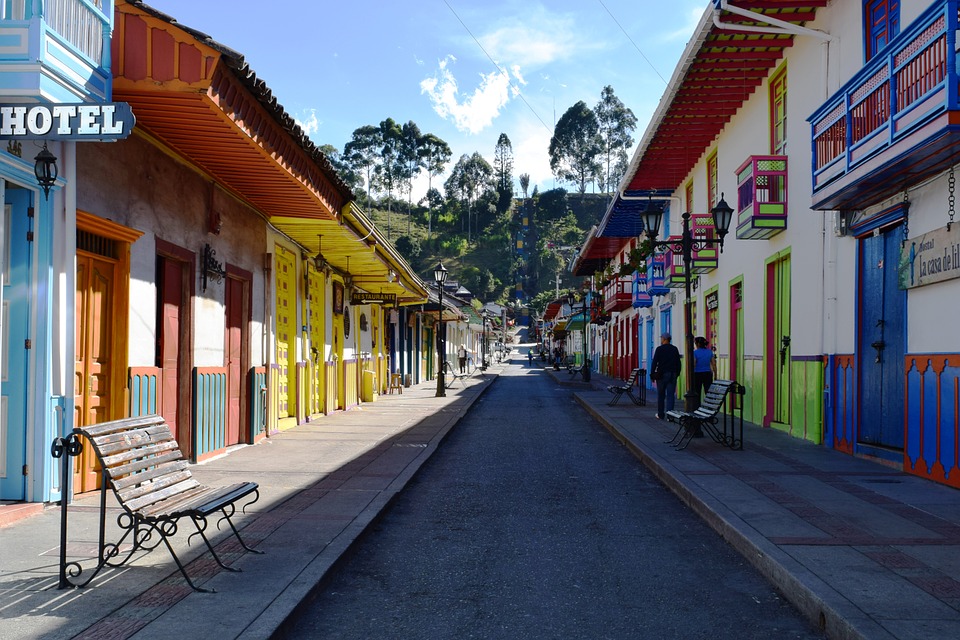
- Gateway to the Valle de Cocora
- A colourful colonial town
- Surrounded by coffee fincas
- Great place to base yourself for hikes
Why it’s awesome:
Salento is to the Cocora Coffee Triangle, what Florence is to Tuscany. It’s the beating heart of the coffee region, and as a result, is oozing with good energy (we can thank the caffeine for that). With its brightly painted buildings, low-key atmosphere, and gorgeous views of the valley, it’s a great spot whether you rely on your morning coffee, or not.
What to do there:
If you’re after Colombian vacation ideas, Salento offers a good mix of natural and cultural attractions. Of course, it’s just a hop and a skip into the famous coffee plantations the country is famous for, but it’s also a good jumping-off point for hikers (and strollers).
A coffee finca (farm) tour is a must here. You’ll learn about the coffee-making process and sample the best of the best.
How to visit:
The closest airports to Salento are in Pereira and Armenia, two nearby cities that are about a one-hour bus or taxi ride away. You could also get a bus from Medellin via Flota Occidental for around $17. The bus takes 7 hours—no wonder it’s so affordable.
#23 – Purace National Park
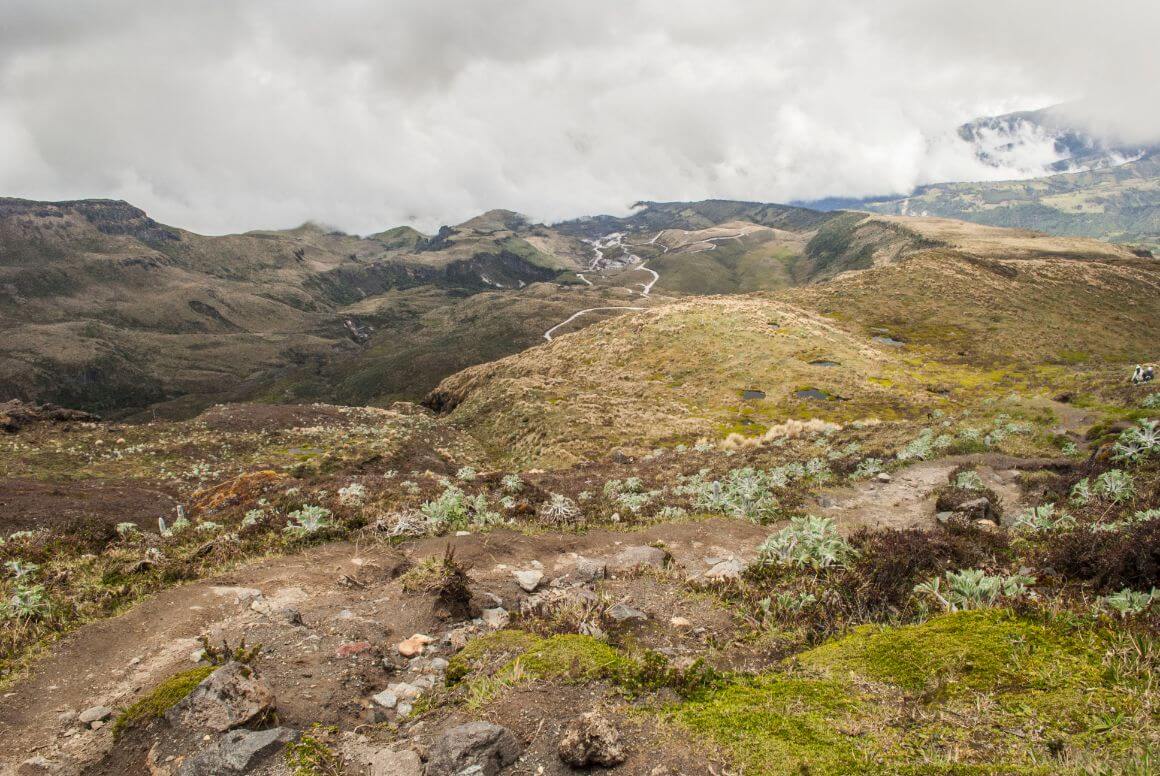
- Volcanic park
- Known for its population of Andean condors
- Home to waterfalls, hot springs, and volcanoes
- Great for landscape photography
Why it’s awesome:
Forget the volcanos and sulphuric hot springs. Purace National Park is the only place in the country where you can see Andean condors in the wild. Actually, don’t forget the volcanos, because they’re pretty cool, too. The name Purace comes from a local dialect meaning ‘mountain of fire’. Sounds about right.
What to do there:
When the weather allows, visitors can hike to the 4750-meter peak of the Purace Volcano, the highest of seven volcanoes in the mountain range. The hike takes five hours to summit and three to descend and is best done between December and January.
How to visit:
The national park is located in the central mountains of the Colombian Andes, close to San Agustin. It’s a bit of a headache to get to. You can either take a 1.5-hour flight from Bogota to Popayan and then commence a five-and-a-half-hour drive.
The alternative is an hour and a half drive from Cali. To hike this landmark in Colombia, you must hire a guide at the entrance and start early in the morning.
#24 – Tatacoa Desert – The Best Place for Stargazing
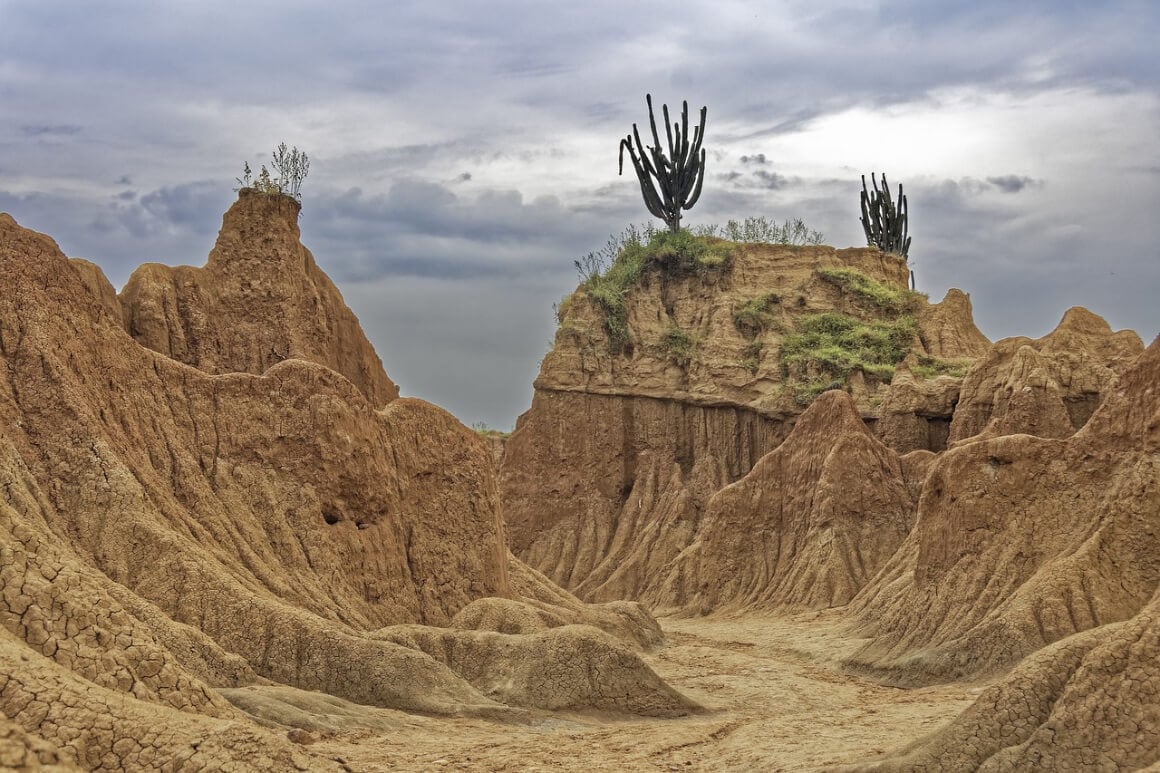
- Second largest arid landscape in the country
- In central Colombia
- Known for red and grey rock formations
- Great for stargazing
Why it’s awesome:
The Tatacoa Desert is Colombia’s second-biggest desert, behind the sand dune landscape at La Guajira. Millions of years ago, this arid area was a garden of tropical forests and lush flowers. Today, its geology of red and grey rocky canyons intrigues everyone who visits.
What to do there:
There isn’t a whole lot to do around here other than exploring the canyons, biking through the rock formations, and staring at the sky. Maybe this is what makes it so appealing.
It’s totally remote and feels a lot like standing on a Mars-like planet. Crystal clear night skies are one of its winning features, which makes it possible to view the southern borealis (and maybe the odd UFO) with perfect clarity.
How to visit:
The desert is close to Villavieja. You could either catch a bus from Bogota to Neiva (which takes around five hours) or a one-hour flight, followed by a short bus or taxi to Villavieja. From there, there are plenty of tours and guides to help you travel to Colombia’s Tatacoa desert.
#25 – Popayan – The Best Place for Foodies
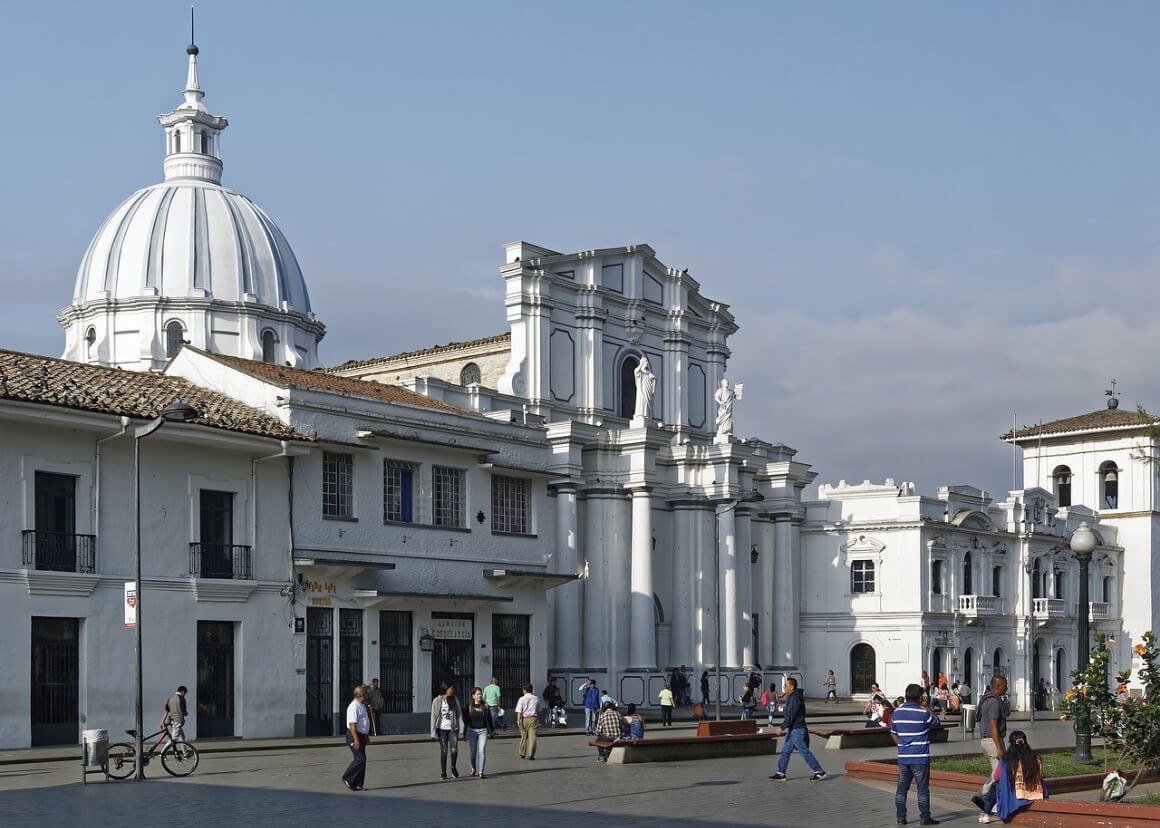
- Known as the ‘White City’ for whitewashed architecture
- UNESCO listed city for gastronomy
- Famous for Holy Week Celebrations
- Close to the Purace National Park
Why it’s awesome:
Walking through the whitewashed streets of Popayan makes you feel like you’re in a different time period. But most notably, the food here is top-notch. It was the first ever UNESCO-recognised city for its food, especially its tamales and empanadas.
What to do there:
Eat, eat, and then eat some more. Seriously, this is one of South America’s top places for cultural foodies, perfectly blending Andean, African, and Spanish flavours.
But don’t expect fancy dishes like foam sprays and dry ice here; Popayan received UNESCO recognition for the culinary heritage of its food. In other words, the food you order today has been prepared in the same way for centuries.
How to visit:
This small city is in southwestern Colombia. The closest major city is Cali, a three-hour bus ride away. If you don’t have the time but do have the cash, you could also catch a flight from Botoga to Popayan small domestic airport. Heads up, only a few flights a day means it’s a pricey flight.
#26 – Guatape and El Penol
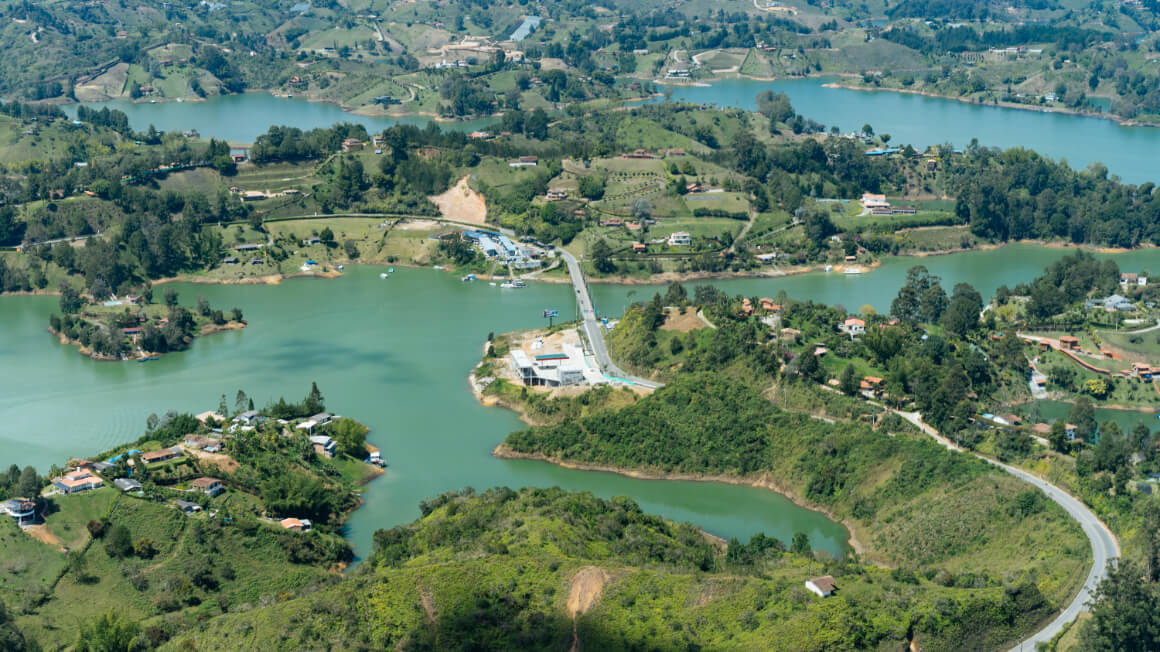
- Home to El Penol, a giant rock
- Famous for decorative zocalos (painted tiles)
- Ideal for lakeside relaxation
- Close to Medellin
Why it’s awesome:
Guatape is one of my favourite towns and a well-deserved famous place in Colombia. It’s set on a lake, and its buildings are so colourful that they look a bit like the town was inspired by a happy preschooler.
It’s impossible to miss El Penol, a massive rock towering over the countryside. If the hike to its peak doesn’t leave you gasping for breath, the views will.
What to do there:
I’d go so far as to say Guatape is one of the most beautiful towns in Colombia. Well, at least the most colourful and decorative. You’re going to want to spend a day or two walking the streets, admiring the traditional murals painted on the facades of each home. Between strolls, dine al fresco in the colourful plazas, take a boat trip, or SUP on the Embalse Del Penol.
How to visit:
Think of these two destinations as siblings, easy to visit on one trip but not technically a single attraction. They’re around a two-hour drive from Medellin, making it an easy day trip from the big city (although I advise staying the night). The 740-step climb to the peak of El Penol costs around $5 per person.
#27 – Santa Cruz de Mompox

- Founded in 1540
- Set along the Magdalena River
- Famous for its filigree gold jewellery
- UNESCO World Heritage Site
Why it’s awesome:
Santa Cruz de Mompox is a small colonial town that feels a bit like Cartagena did before it became so touristy. Still relatively under the radar, it’s a UNESCO-protected town famous for its architecture and the delicate artisanal jewellery it produces. The village is located along the Magdalena River, which winds its way towards the Caribbean.
What to do there:
Surprise, surprise. This is another town you’re going to want to explore on foot. Another Colombian must-do is to join a river cruise along the Magdalena. The town also hosts a big Jazz Festival and regular Film Festivals. Check the schedule to see if your trip coincides with any events.
How to visit:
A big part of its charm is its remoteness. You can get to Mompox by bus from Cartagena in six to eight hours. Alternatively, and for a little more cash-money, the nearest airport is in Corozal, which is a three-hour bus or taxi ride from Mompox. Either way, it’s not the easiest place to get to.
#28 – Minca – Best Place for Waterfall Hikes
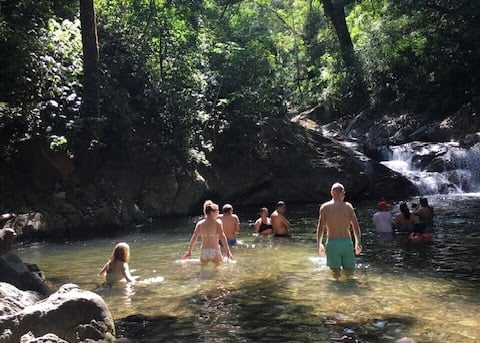
- In the Sierra Nevada mountains
- Home to top eco-lodges and coffee fincas
- Cooler temperatures
- Great for hiking without the heat
Why it’s awesome:
From the moment you arrive at the foothills of the Sierra Nevada mountains, you feel like you’re breathing clean air. The air is cool, the jungles are lush, and Minca has a totally different look and vibe from Colombia’s coastline. Minca is a mountain retreat for tourists hoping to escape the heat and do some tranquil hikes.
What to do there:
My top recommendation is to stay in an eco-lodge in Colombia, of which there are plenty (affordable and luxurious) to choose from!
When you aren’t admiring the mountain views from your eco-lodge, you’ll be hiking. One of the best hikes is to Los Pinos, a three-hour adventure from the town. There are plenty of waterfalls with public swimming holes, too. The main two are Pozo Azul and Marinka.
How to visit:
Minca is under an hour’s drive from Santa Marta, and buses leave from the main market regularly. Once in Minca, there isn’t any public transport, so you’ll either need to trek or hire a moto-taxi to get to your accommodation.
#29 – Ciudad Perdida – Best Place to Visit in Colombia to Explore Ancient Ruins
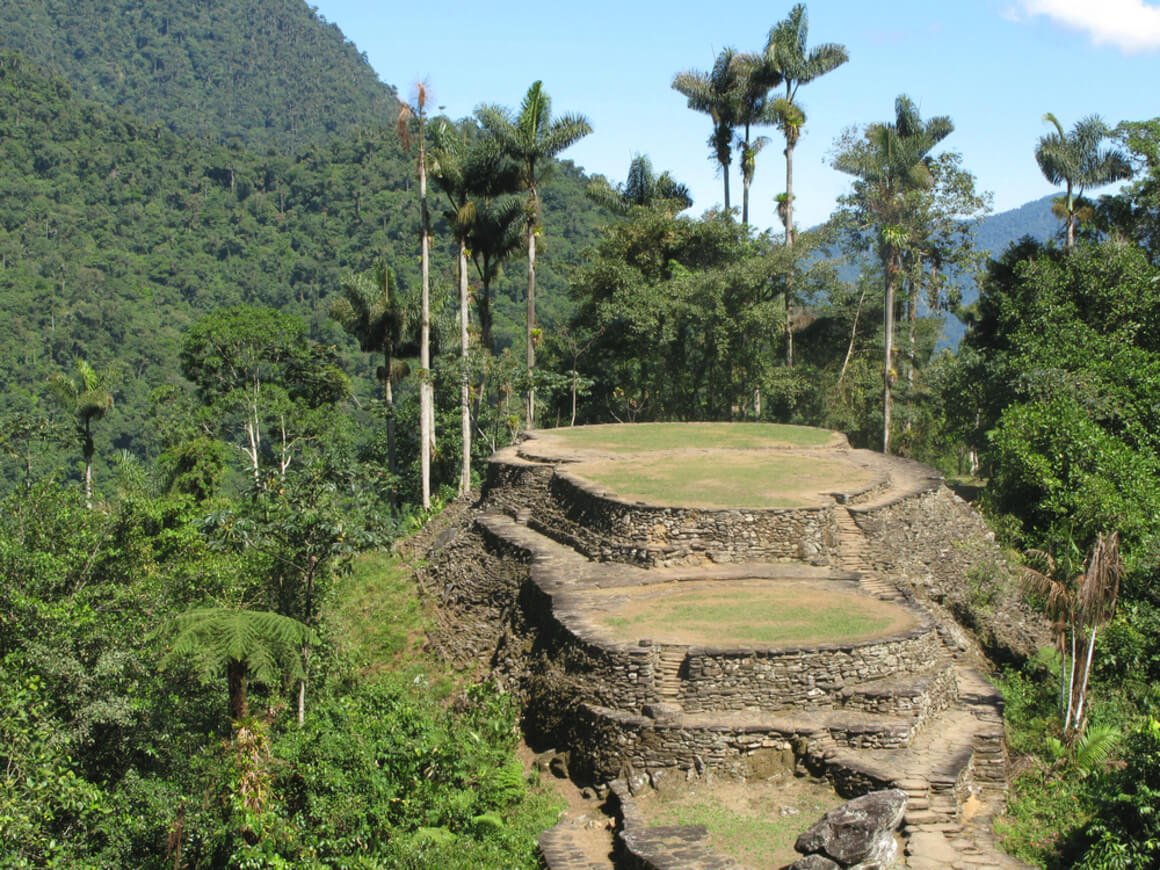
- Known as ‘The Lost City’
- Only accessible by multi-day hike
- Requires fitness and stamina
- Located in the Sierra Nevada mountains
Why it’s awesome:
Ciudad Perdida is Colombia’s version of Machu Picchu. It’s one of those places where the journey is as epic as the destination. The trek through mountains, rivers, and jungles is no joke, but once you reach the Lost City, it will feel like it must have felt for the first explorers to uncover the jungle-covered hidden cities of the Amazon.
What to do there:
No four-day hike goes ahead without preparations. You’ll need to hire a licensed tour guide to lead the way. Along the route, you’ll pass through local villages, swim in rivers, and camp in the jungle.
Once in Ciudad Perdida, you’ll be able to explore the ruins and learn about the historic Tayrona civilization.
How to visit:
Treks to Ciudad Perdida depart from Santa Marta and usually last four to five days. Prices vary between $300 and $400 for the full experience, including guides, food, and camping gear.
#30 – San Andres Island
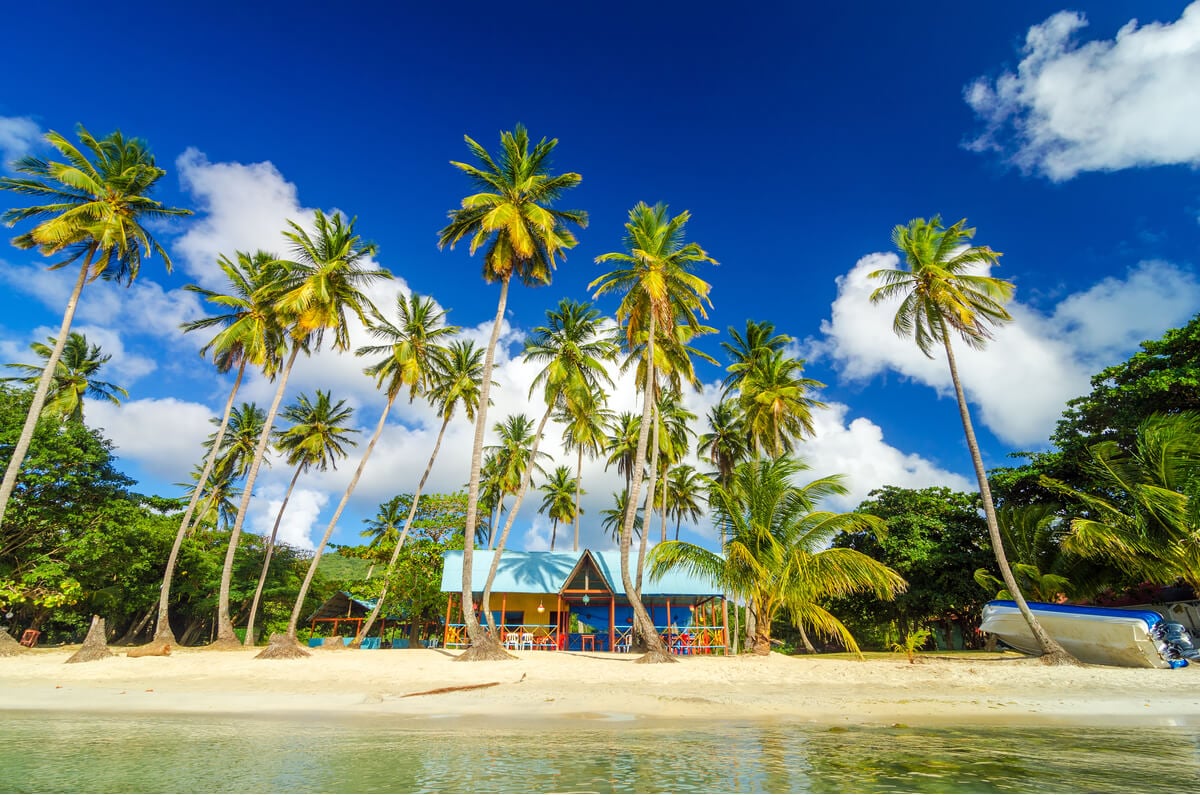
- Caribbean Island
- UNESCO Biosphere Reserve
- Popular for diving and snorkelling
- Laid-back vibe with reggae music
Why it’s awesome:
The beaches of San Andres look like they’re created with an AI tool. The island has a rich Afro-Caribbean culture, and you can really feel the reggae influence from the beaches to the best places to eat on Colombia’s favourite tropical island.
What to do there:
With well-guarded coral reefs, San Andres is a hotspot for diving and snorkelling. Johnny Cay and the famous natural aquarium called El Acuario are two favourites for snorkelling. Oh, and the island even has some gorgeous botanical gardens to explore.
How to visit:
San Andres is in the heart of the Caribbean. In fact, it’s technically closer to Nicaragua than Colombia. If you’re visiting from Colombia, it’s around a two-hour flight from Bogota or Medellin, and there are plenty of flights available. You’ll also need to pay a $31 tourist tax since it’s a UNESCO Biosphere Reserve. It’s a small price to pay to access such incredible reefs.

Stash your cash safely with this money belt. It will keep your valuables safely concealed, no matter where you go.
It looks exactly like a normal belt except for a SECRET interior pocket perfectly designed to hide a wad of cash, a passport photocopy or anything else you may wish to hide. Never get caught with your pants down again! (Unless you want to…)
Hide Yo’ Money!Get insured for your trip to Colombia
Sure, Colombia’s past might be marked by drug cartels and gang violence. No big deal. But while these headlines stick, the reality today is far less dramatic than Netflix’s Narcos and Griselda tend to show. Most attractions in Colombia are as safe as any other major South American destination.
Like anywhere, you should stay smart and always remain aware of your surroundings. Avoid dicey areas, keep an eye on your belongings, and use reputable transportation. But while the big cities like Bogota and Medellin have seen huge improvements in public safety, I always recommend taking out good travel insurance – you can never be too careful, can you?
ALWAYS sort out your backpacker insurance before your trip. There’s plenty to choose from in that department, but a good place to start is Safety Wing.
They offer month-to-month payments, no lock-in contracts, and require absolutely no itineraries: that’s the exact kind of insurance long-term travellers and digital nomads need.
SafetyWing is cheap, easy, and admin-free: just sign up lickety-split so you can get back to it!
Click the button below to learn more about SafetyWing’s setup or read our insider review for the full tasty scoop.
FAQs About the Best Places to Visit in Colombia
Find out what people want to know about the best places to visit in Colombia
Final Thoughts on The Best Places to Visit in Colombia
Colombia is one of those countries that catches you by surprise. One minute, you’re salsa dancing in a city that never sleeps; the next, you’re hiking through the Amazon jungle. And if that sounds a bit too adventurous for you, you could be sipping coffee at a cafe on the colonial streets of Cartagena. Win, win, WIN.
However you choose to spend your days, there are some incredible places to visit in Colombia. The best part is that it’s not just the stunning natural landscapes that will win your heart – it’s the warmth and friendliness of the people who call it home.
Wherever you choose to visit, Colombians will always be there to offer a smile, some directions, and a damn good story. We’ve all travelled enough by now to know how lucky it is to find this kind of energy abroad. Prepare to be impressed.
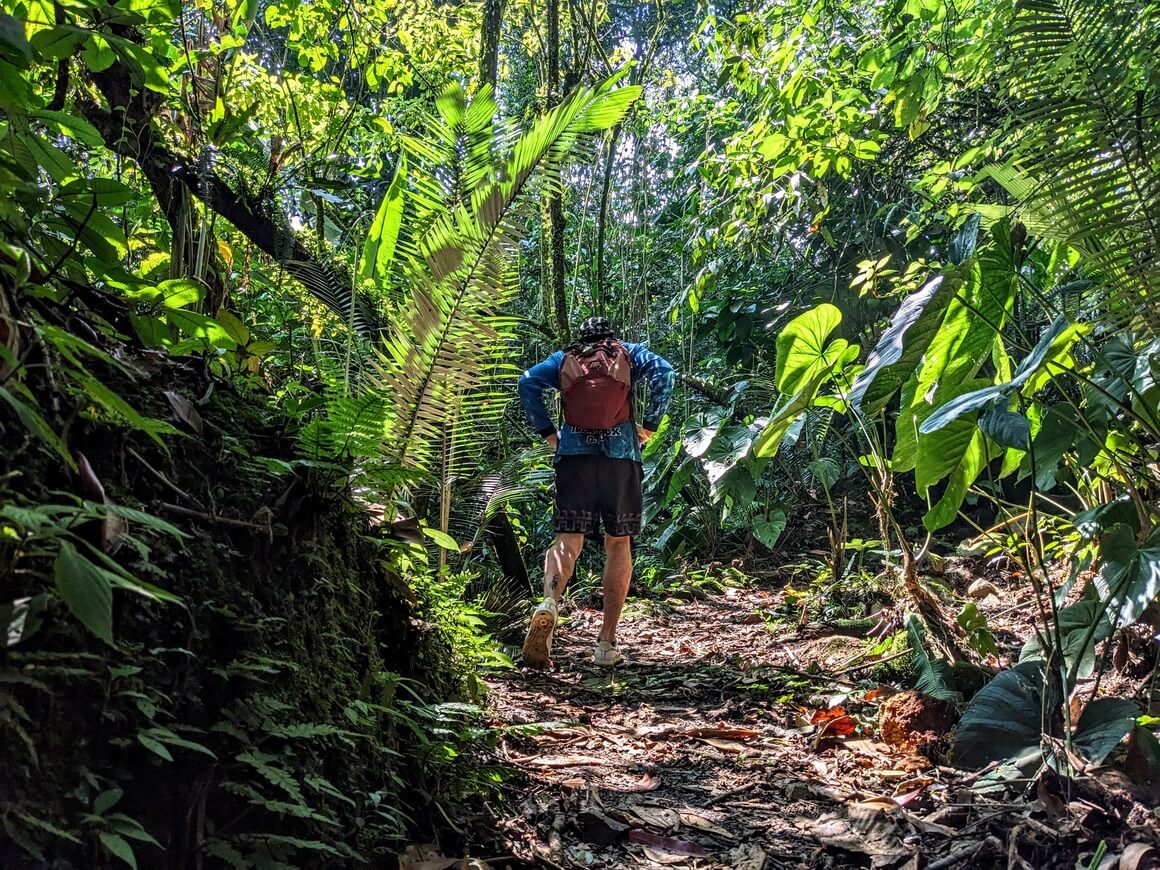
Photo: @sebagvivas
- Our ultimate Backpacking in Colombia guide is an essential read before you travel.
- Grab your International sim card for Colombia without the hassle.
- Check out our Colombia hostel guide for a vibing place to stay.
- newDon’t forget the essentials with our in-depth backpacking packing list.
- Plan your entire South America backpacking adventure with our mega-guide!
Buy Us a Coffee!
A couple of you lovely readers suggested we set up a tip jar for direct support as an alternative to booking through our links. So we created one!
You can now buy The Broke Backpacker a coffee. If you like and use our content to plan your trips, it’s a much appreciated way to show appreciation 🙂



